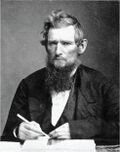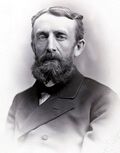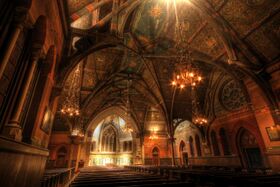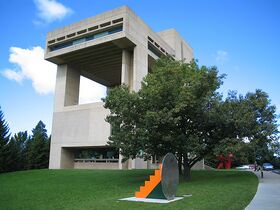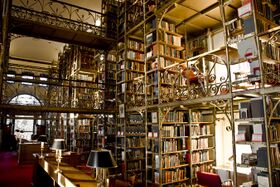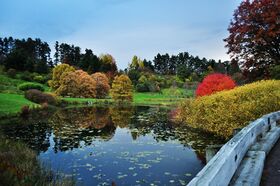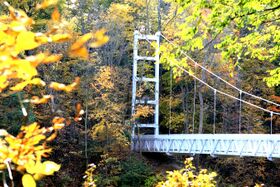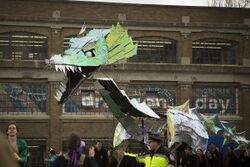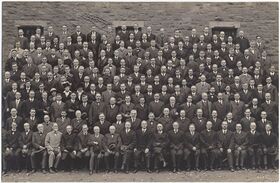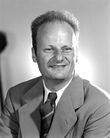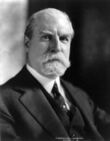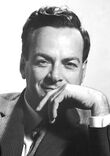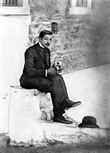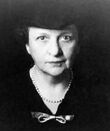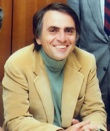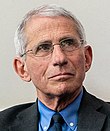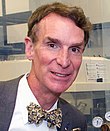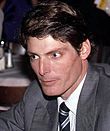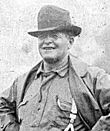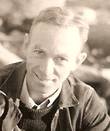Organization:Cornell University
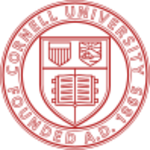 | |
| Latin: Universitas Cornelliana | |
| Type | Private[1] land-grant research university |
|---|---|
| Established | April 27, 1865 |
| Founder |
|
Academic affiliations |
|
| Endowment | $10.0 billion (2023)[2] |
| Budget | $5.4 billion (2023)[3] |
| President | Martha E. Pollack |
| Provost | Michael Kotlikoff |
Academic staff | 1,639 – Ithaca, New York 1,235 – NYC, New York 34 – Doha, Qatar |
| Students | 26,284 (Fall 2023)[4] |
| Undergraduates | 16,071 (Fall 2023)[4] |
| Postgraduates | 10,207 (Fall 2023)[4] |
| Location | Ithaca , New York , United States [ ⚑ ] : 42°27′13″N 76°28′26″W / 42.45361°N 76.47389°W |
| Campus | Small city[5] |
| Other campuses[6] |
|
| Newspaper |
|
| |u}}rs | Script error: No such module "College color". |
| Nickname | Big Red |
Sporting affiliations |
|
| Mascot | Touchdown the Bear (unofficial)[7] |
| Website | www |
Cornell University is a private Ivy League land-grant research university based in Ithaca, New York. The university was founded in 1865 by Ezra Cornell and Andrew Dickson White. Since its founding, Cornell has been a co-educational and non-sectarian institution. As of fall 2022, the student body included over 15,000 undergraduate and 7,000 graduate students from all 50 U.S. states and 130 countries.[4]
The university is organized into seven undergraduate colleges and seven graduate divisions at its main Ithaca campus[8] with each college and division defining its specific admission standards and academic programs in near autonomy. The university also administers three satellite campuses, including two in New York City and one in the Education City region of Qatar.[8]
Cornell is one of the few private land-grant universities in the United States.[lower-alpha 1] Of its seven undergraduate colleges, three are state-supported statutory or contract colleges through the State University of New York system, including its agricultural and human ecology colleges and its industrial labor relations school. Among Cornell's graduate schools, only the veterinary college is state-supported. The main campus of Cornell University in Ithaca spans 745 acres (301 ha).
(As of October 2023) there have been 62 Nobel laureates, 4 Turing Award winners, and 1 Fields Medalist affiliated with Cornell. Cornell counts more than 250,000 living alumni and its former and present faculty and alumni include 34 Marshall Scholars,[9] 33 Rhodes Scholars, 29 Truman Scholars, 7 Gates Scholars, 63 Olympic Medalists, 10 current Fortune 500 CEOs, and 35 billionaire alumni.[10][11][12][13][14]
History
19th century
Cornell University was founded on April 27, 1865, by Ezra Cornell, an entrepreneur and New York State Senator, and Andrew Dickson White, an educator and fellow New York State Senator, after the New York State legislature authorized the university as the state's land grant institution.[15] Ezra Cornell offered his farm in Ithaca, New York as a preliminary site for the university along with $500,000 of his personal fortune as an initial endowment (equivalent to $10,382,000 in 2019), and White agreed to be Cornell University's first president.
During Cornell University's first three years, White oversaw the construction of the first two buildings and traveled to attract students and faculty.[16] The university was inaugurated on October 7, 1868, and 412 men were enrolled the next day.[17]
Cornell developed as a technologically innovative institution, applying its research to its own campus and to outreach efforts. In 1883, it was one of the first university campuses to use electricity from a water-powered dynamo to light the campus grounds.[18] Since 1894, Cornell has included colleges that are state funded and fulfill statutory requirements;[19] it has also administered research and extension activities that have been jointly funded by New York state along with federal government matching programs.[20]
Cornell has had active alumni since its earliest classes. It was one of the first universities to include alumni-elected representatives on its board of trustees.[lower-alpha 2]
Cornell University is home to the Cornell University Press, founded in 1869, the country's oldest publishing enterprise. Cornell was first home to the Cornell Era, a weekly campus publication founded in 1868. But the Cornell Daily Sun, an independent student-run newspaper founded in 1880 became the school's leading publication. Today, the Sun is the oldest continuously independent college daily in the United States.
In the 19th century, Cornell had several literary societies that were founded to encourage writing, reading, and oration skills. The U.S. Bureau of Education described three of them as a "purely literary society" following the "traditions of the old literary societies of Eastern universities. These societies largely disappeared by the 20th century.
20th century
Cornell was among the Ivy League universities that experienced heightened student activism during the 1960s, related to cultural issues, civil rights, and opposition to the Vietnam War. Protests and occupations resulted in the resignation of Cornell's president and the restructuring of university governance.[24]
In 1967, Cornell experienced a fire in the Residential Club dormitory that killed eight students and one professor.
In its ranking in 1995 of 36 Ph.D. programs, the National Research Council ranked 19 of Cornell's programs in the top 10 in terms of overall academic quality, sixth best in the United States overall: Astrophysics (ninth), Chemistry (sixth), Civil Engineering (sixth), Comparative Literature (sixth), Computer Science (fifth), Ecology (fourth), Electrical Engineering (seventh), English (seventh), French (eighth), Geosciences (tenth), German (third), Linguistics (ninth), Materials Science (third), Mechanical Engineering (seventh), Philosophy (ninth), Physics (sixth), Spanish (eighth), and Statistics/Biostatistics (fourth). The council ranked faculty quality in Arts and Humanities as fifth, in Mathematics and Physical Sciences as sixth, and in Engineering as fifth.[25][26]
21st century
Since 2000, Cornell has been expanding its international programs. In 2004, the university opened the Weill Cornell Medical College in Qatar.[27] It has partnerships with institutions in India, Singapore, and the China .[28][29][30]
In 2005, Jeffrey S. Lehman, a former president of Cornell, described the university and its high international profile as a "transnational university".[31] On March 9, 2004, Cornell and Stanford University laid the cornerstone for a new 'Bridging the Rift Center' to be built and jointly operated for education on the Israel–Jordan border.[32]
In August 2002, a graduate student group, At What Cost?, formed at Cornell in August 2002 to oppose a graduate student unionization drive run by an organization called CASE/UAW, affiliated with the United Auto Workers. The unionization vote was held October 23–24, 2002, and the union was rejected. At What Cost? was considered instrumental in the unusually large 90% turnout for the vote and in the 2-to-1 defeat of the unionization proposal. There had been no prior instance in American graduate student unionization history where a unionization proposal was defeated by a vote.[33][34][35]
In 2017, Cornell opened Cornell Tech, a graduate campus and research center in New York City . Located on Roosevelt Island, the institution was the winning bid of a competition initiated by former Mayor Michael Bloomberg to spur technology entrepreneurship in New York City.
The university offers over 4,000 courses as of 2023.[36]
Campuses
Ithaca campus
Cornell University's main campus is located in Ithaca, New York, on East Hill, offering views of the city and Cayuga Lake. The campus has expanded to approximately 745 acres (301 ha) since its founding, comprising academic buildings, laboratories, administrative facilities, athletic centers, auditoriums, museums, and residential areas.[37][38] In 2011, Travel+Leisure recognized the Ithaca Campus as one of the most beautiful in the United States, praising its unique blend of architectural styles, historic landmarks, and picturesque surroundings.[39]
The Ithaca campus is characterized by an irregular layout and a mix of architectural styles, which have developed over time due to the university's ever-changing master plans for the campus. The more ornate buildings generally predate World War II, while the student population doubled from 7,000 in 1950 to 15,000 by 1970, leading to modernist architectural styles becoming more prevalent.[40]
Several university buildings are listed as historic landmarks,[41] highlighting the architectural and historical significance of the campus. Those listed on the National Register of Historic Places include the Andrew Dickson White House, Bailey Hall, Caldwell Hall, the Computing and Communications Center, Morrill Hall, Rice Hall, Fernow Hall, Wing Hall, Llenroc, and 13 South Avenue (Deke House).[42] Three other listed historic buildings—the original Roberts Hall, East Robert Hall, and Stone Hall—were demolished in the 1980s to make way for new development.[43]
Central, North, and West campuses
The majority of academic and administrative facilities are located at Central Campus. The architectural styles on Central Campus range from ornate Collegiate Gothic, Victorian, and Neoclassical buildings to more spare international, and modernist structures. Frederick Law Olmsted, the designer of Central Park, proposed a "grand terrace" overlooking Cayuga Lake in one of the earliest plans for the campus.[44]
North Campus features primarily residential buildings, with ten residence halls designed to accommodate first and second-year students, as well as transfer students in the Townhouse Community.,[45] The architectural styles of North Campus are more modern, reflecting the growth of the university and the need for additional housing during the mid-20th century.
The West Campus House System showcases a blend of architectural styles, with five main residence halls and several Gothic-style buildings collectively known as "the Gothics." These Collegiate Gothic structures add a sense of historical charm to the campus, while the modern residence halls provide comfortable accommodations for students."[46]
In the nearby Collegetown neighborhood, the architectural styles are more diverse, reflecting the area's mixed-use nature. The Schwartz Performing Arts Center and two upper-level residence halls[47][48] are surrounded by a variety of apartment buildings, eateries, and businesses, creating a vibrant and lively atmosphere for students and residents alike.[49]
Natural surroundings
The Ithaca campus is located in the Finger Lakes region and has views of the city, Cayuga Lake, and the surrounding valleys. The campus is bordered by two gorges, Fall Creek Gorge and Cascadilla Gorge, which contribute to the university's natural landscape. Although these gorges are popular swimming spots during warmer months, their use is discouraged by the university and city code due to potential safety hazards.[50] Adjacent to the main campus, Cornell owns the 2,800-acre (1,100 ha) Cornell Botanic Gardens, featuring various plants, trees, and ponds. The gardens' trails allow visitors to explore the natural surroundings.[51]
Sustainability
Cornell University has implemented various green initiatives to promote sustainability and reduce its environmental impact. Key projects include a gas-fired combined heat and power facility,[52] an on-campus hydroelectric plant,[53] and a lake source cooling system.[54] In 2007, Cornell established a Center for a Sustainable Future.[55] The university has committed to achieving net carbon neutrality by 2035[56] and, as of 2020, is powered by six solar farms providing a total of 28 megawatts of power.[57] Additionally, Cornell is developing an enhanced geothermal system, Earth Source Heating, to meet campus heating needs.[58] Cornell was the first university in the United States to commit to Kyoto Protocol emission reductions.[59] Following a multiyear, cross-campus discussion about energy and sustainability, the Cornell Atkinson Center for Sustainability was established in 2007, and received an $80 million gift from alumnus David R. Atkinson '60 and his wife Patricia, the largest gift ever received from an individual at Cornell University at that time, and a subsequent $30 million commitment in 2021 will name a new multidisciplinary building on campus.[60]
In 2023, a concert at Barton Hall by Dead and Company raised $3.1 million for organizations MusiCares and the Cornell 2030 Project, which has contributed to the establishment of the Climate Solutions Fund. The fund aims to catalyze large-scale, impactful climate research across the university and will be administered by the Atkinson Center.[61][62]
New York City campuses
Weill Cornell
Cornell's medical campus in New York City , also called Weill Cornell, is on the Upper East Side of Manhattan. It is home to two Cornell divisions: Weill Cornell Medical College and Weill Cornell Graduate School of Medical Sciences, and has been affiliated with the New York-Presbyterian Hospital since 1927.[63] Although their faculty and academic divisions are separate, the Medical Center shares administrative and teaching hospital functions with the Columbia University Medical Center.[64] These teaching hospitals include the Payne Whitney Clinic in Manhattan and the Westchester Division in White Plains, New York.[65] Weill Cornell Medical College is also affiliated with the neighboring Memorial Sloan–Kettering Cancer Center, Rockefeller University, and the Hospital for Special Surgery. Many faculty members have joint appointments at these institutions. Weill Cornell, Rockefeller, and Memorial Sloan–Kettering offer the Tri-Institutional MD–PhD Program to selected entering Cornell medical students.[66] From 1942 to 1979, the campus also housed the Cornell School of Nursing.[67]
Cornell Tech

On December 19, 2011, Cornell and the Technion – Israel Institute of Technology won a competition for rights to claim free city land and $100 million in subsidies to build an engineering campus in New York City. The competition was established by New York City Mayor Michael Bloomberg, to increase entrepreneurship and job growth in the city's technology sector. The winning bid consisted of a 2.1 million square foot state-of-the-art tech campus to be built on Roosevelt Island, on the site of the former Coler-Goldwater Specialty Hospital. Instruction began in the fall of 2012, in a temporary location at 111 Eighth Avenue in Manhattan in space donated by Google.[68] Thom Mayne, of the architecture firm Morphosis, has been selected to design the first building to be constructed on Roosevelt Island. Begun in 2014, construction of the first phase of the campus was completed in September 2017.[69]
Other New York City programs

In addition to the tech campus and medical center, Cornell maintains local offices in New York City for some of its service programs. The Cornell Urban Scholars Program encourages students to pursue public service careers, arranging assignments with organizations working with New York City's poorest children, families, and communities.[71] The College of Human Ecology and the College of Agriculture and Life Sciences enable students to reach out to local communities by gardening and building with the Cornell Cooperative Extension.[72] Students with the School of Industrial and Labor Relations' Extension and Outreach Program make workplace expertise available to organizations, union members, policymakers, and working adults.[73] The College of Engineering's Operations Research Manhattan, in the city's Financial District, brings together business optimization research and decision support services addressed to both financial applications and public health logistics planning.[74] The College of Architecture, Art, and Planning has an 11,000 square foot, Gensler-designed facility at 26 Broadway in the Financial District, that opened in 2015.[75] The General Electric Building at 570 Lexington Avenue serves as the New York location for over a dozen programs, including the NYC headquarters of the ILR School and the NYC branch of the Cornell Cooperative Extension.[70]
Qatar campus
Weill Cornell Medical College in Qatar is in Education City, near Doha. Opened in September 2004, it was the first American medical school to be established outside of the United States. The college is part of Cornell's program to increase its international influence. The college is a joint initiative with the Qatar government, which seeks to improve the country's academic programs and medical care.[27] Along with its full four-year MD program, which mirrors the curriculum taught at Weill Medical College in New York City , the college offers a two-year undergraduate pre-medical program with a separate admissions process. This undergraduate program opened in September 2002 and was the first coeducational institute of higher education in Qatar.[76]
The college is partially funded by the Qatar government through the Qatar Foundation, which contributed $750 million for its construction.[77] The medical center is housed in a large two-story structure designed by Arata Isozaki, an internationally known Japanese architect.[78] In 2004, the Qatar Foundation announced the construction of a 350-bed Specialty Teaching Hospital, near the medical college in Education City. The hospital was to be completed in a few years.[27]
Other facilities
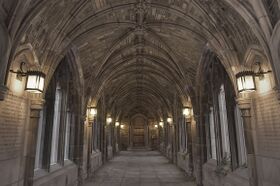
Cornell University owns and operates a variety of off-campus research facilities and offers study abroad and scholarship programs.[79] These facilities and programs contribute to the university's research endeavors and provide students with unique learning opportunities.
Research facilities
Cornell's off-campus research facilities include Shoals Marine Laboratory, a seasonal marine field station on Appledore Island off the Maine–New Hampshire coast, is operated in conjunction with the University of New Hampshire and focuses on undergraduate education and research.[80] Until 2011, Cornell operated the Arecibo Observatory in Puerto Rico, which was the site of the world's largest single-dish radio telescope.[81]
The university also maintains several facilities dedicated to conservation and ecology, such as the New York State Agricultural Experiment Station in Geneva, New York. This station operates three substations, including the Cornell Lake Erie Research and Extension Laboratory in Portland,[82] the Hudson Valley Laboratory in Highland,[83] and the Long Island Horticultural Research Laboratory in Riverhead.[84] The Cornell Lab of Ornithology in Ithaca conducts research on biological diversity, primarily in birds,[85]
Other research facilities include the Animal Science Teaching and Research Center, the Duck Research Laboratory, the Cornell Biological Field Station, the Freeville Organic Research Farm, the Homer C. Thompson Vegetable Research Farm, and biodiversity laboratories in Punta Cana, Dominican Republic, and the Peruvian Amazon Rainforest.[86][87][88][89][90][12]
Study abroad and scholarship programs
Cornell offers various study abroad and scholarship programs that allow students to gain experience and earn credit towards their degrees. The "Capital Semester" program offers students the opportunity to intern in the New York State Legislature in Albany. The Cornell in Washington program enables students to spend a semester in Washington, D.C., participating in research or internships.[91] Similarly, the Cornell in Rome program, allows students to study architecture, urban studies, and the arts in Rome, Italy.[92]
Cooperative extension service
As New York State's land-grant university, Cornell operates a cooperative extension service with 56 offices spread across the state. These offices provide programs in agriculture and food systems, children, youth and families, community and economic vitality, environment and natural resources, and nutrition and health.[93] Additionally, the university operates New York's Animal Health Diagnostic Center, which serves as a valuable resource for animal disease control and husbandry.[94]
Organization and administration
| College/school founding | |
|---|---|
| College/school | Year founded |
| Agriculture and Life Sciences | 1874 |
| Architecture, Art, and Planning | 1871 |
| Arts and Sciences | 1865 |
| Business | 1946 |
| Computing and Information Science | 2020 |
| Engineering | 1870 |
| Graduate School | 1909 |
| Hotel Administration | 1922 |
| Human Ecology | 1925 |
| Industrial and Labor Relations | 1945 |
| Law | 1887 |
| Medical Sciences | 1952 |
| Medicine | 1898 |
| Public Policy | 2021 |
| Tech | 2011 |
| Veterinary Medicine | 1894 |
Cornell University is a non-profit organization with a decentralized structure where colleges and schools exercise wide autonomy in defining academic programs, admissions, advising, and conferring degrees. The university comprises nine privately endowed colleges and four publicly supported statutory colleges, offering undergraduate, graduate, and professional programs. Cornell operates eCornell for online professional development and certificate programs[95] and participates in New York's land-grant, sea-grant, and space-grant programs.[96][97]
Governance and administration
Cornell University is governed by a 64-member board of trustees, which includes both privately and publicly appointed trustees. The board includes trustees appointed by the Governor of New York, alumni-elected trustees, faculty-elected trustees, student-elected trustees,[98] and non-academic staff-elected trustees. The Governor, Temporary President of the Senate, Speaker of the Assembly, and president of the university serve in an ex officio voting capacity. The board is responsible for electing a President to serve as the chief executive and educational officer.[99][100] Robert Harrison served as the chairman of the board from 2014 to 2022.[101] The Board of Trustees holds four regular meetings each year, subject to the New York State Open Meetings Law.[102] Kraig Kayser has served as the chairman of the board since 2022.
Martha E. Pollack was inaugurated as Cornell's fourteenth president on August 25, 2017,[103][104] succeeding Elizabeth Garrett, who served from July 2015 until her death in March 2016.[105][106]
Colleges and academic structure
Cornell's colleges and schools offer a wide range of undergraduate, graduate, and professional programs. There are seven undergraduate colleges and seven schools offering graduate and professional programs. All academic departments at Cornell are affiliated with at least one college. A handful of inter-school academic departments offer courses in more than one college. Students pursuing graduate degrees in these schools are enrolled in the Graduate School. The School of Continuing Education and Summer Sessions provides additional programs for college and high school students, professionals, and other adults.[107]
Cornell's statutory colleges include the New York State College of Agriculture and Life Sciences, College of Human Ecology, School of Industrial and Labor Relations, and College of Veterinary Medicine. These colleges received $131.9 million in SUNY appropriations in 2010–2011 to support their teaching, research, and service missions, making them accountable to the State University of New York (SUNY) trustees and other state agencies.[108][109][110] New York residents enrolled in these colleges qualify for discounted tuition, however, their academic activities are considered by New York state to be private and non-state entities.[111]:1
Cornell's nine privately endowed, non-statutory colleges include the College of Arts and Sciences, College of Engineering, College of Architecture, Art, and Planning, and College of Hotel Administration. These colleges operate independently of state funding and oversight, giving them greater autonomy in determining their academic programs, admissions, and advising. They also do not offer discounted tuition for New York residents.
Of the 15,182 undergraduate students at Cornell, 4,602 (30.3%) are affiliated with the largest college by enrollment, Arts and Sciences, followed by 3,203 (21.1%) in Engineering and 3,101 (20.4%) in Agriculture and Life Sciences. The smallest of the seven undergraduate colleges is Architecture, Art, and Planning, with 503 (3.3%) students.[4] The only university-wide requirements for a baccalaureate degree are to pass a swimming test, take two physical education courses, and satisfy a writing requirement.
Fundraising and financial support
Cornell University has a robust fundraising program, ranking third among U.S. universities in 2018 (behind Harvard and Stanford), collecting $743 million in private support.[112] Each college and program has its own staffed fundraising program, in addition to the central University development staff located in Ithaca and New York City.
In recent years, Cornell has been the recipient of several major donations that have enabled the university to expand its reach, create new programs, and drive advancements in education and research. Charles Feeney, founder of DFS Group, is Cornell's largest donor, having given one billion dollars to the university to fund numerous initiatives, including Cornell Tech, a cutting-edge technology-focused campus in New York City.[113] In 2017, the university also received a donation of $150 million from H. Fisk Johnson of S. C. Johnson & Son to create of the Cornell SC Johnson College of Business, the second largest ever gift to a business school.[114] Furthermore, the Atkinson Center for a Sustainable Future was established in 2010 following an $80 million donation from David Atkinson and his wife, Patricia.[115] In 2015, Joan and Irwin M. Jacobs, founder of Qualcomm, donated $133 million to fund the Jacobs Technion-Cornell Institute at Cornell Tech.[116] The Weill Cornell Medical College was founded thanks to a $100 million donation in 1998 from Citibank head Sanford I. Weill and his wife, Joan, with the Weills providing over $600 million in total lifetime donations to the university.[117]
Academics
Cornell is a large, primarily residential research university with a majority of enrollments in undergraduate programs.[118] The university has been accredited by the Middle States Commission on Higher Education or its predecessor since 1921.[119] Cornell operates on a 4–1–4 academic calendar with the fall term beginning in late August and ending in early December, a three-week winter session in January, and the spring term beginning in late January and ending in early May.[120]
Cornell, along with Oregon State University, Pennsylvania State University, University of Georgia, and University of Hawaiʻi at Mānoa, are the only institutions to be land-grant universities that are also members of the other three "grant" programs: sea grant, space grant, and sun grant. Cornell is the only such private university.
Admissions
| Admissions statistics | |
|---|---|
2022 entering class[121] | |
| Admit rate | 6.9% |
| Yield rate | 69% |
| Test scores middle 50% | |
| SAT EBRW | 700–760 |
| SAT Math | 750–800 |
| ACT Composite | 33–35 |
| High school GPA† | |
| Top 10% | 83.7% |
| Top 25% | 97.7% |
| Top 50% | 99.9% |
| |
Admission to Cornell University is highly competitive. In spring of 2022 (Class of 2026), Cornell's undergraduate programs received 71,164 applications and admitted only 5,168 for a 7.2% acceptance rate.[122] For Fall 2019 enrolling freshmen, the middle 50% range of SAT scores were 680–760 for evidence-based reading and writing and 720–800 for mathematics.[123] The middle 50% range of the ACT composite score was 32–35.[123]
The university continues to attract a diverse and inclusive student body. The proportion of admitted students who self-identify as underrepresented minorities increased to 34.2% from 33.7% in 2021, and 59.3% self-identify as students of color. That number has increased steadily over the past five years, enrollment officials said, from 52.5% in 2017 and 57.2% in 2020.
Of those admitted, 1,163 will be first-generation college students, another increase over 2020's 844.[124] The university is need-blind for domestic applicants.[125]
Financial aid
Cornell University, under Section 9 of its original charter, ensures equal access to education by admitting students without distinction based on rank, class, occupation, or locality.[126] The charter also mandates free instruction for one student from each Assembly district in the state.[126]
From the 1950s to the 1980s, Cornell collaborated with other Ivy League institutions to establish a uniform financial aid system.[127] Although a 1989 consent decree ended this collaboration due to an antitrust investigation, all Ivy League schools still offer need-based financial aid without athletic scholarships.[128] In December 2010, Cornell pledged to match any grant component of financial aid offers from other Ivy League schools, MIT, or Stanford for accepted applicants considering these institutions.[129]
In 2008, Cornell introduced a financial aid initiative, gradually replacing need-based loans with scholarships for undergraduate students from lower-income families.[130] Despite a 27% drop in the university's endowment in 2008, the then-president allocated additional funds to continue the initiative, seeking to raise $125 million in donations for its support.[131] By 2010, Cornell successfully met the full financial aid needs of 40% of full-time freshmen with financial need, and the average undergraduate student debt upon graduation was $21,549.[132]
International programs
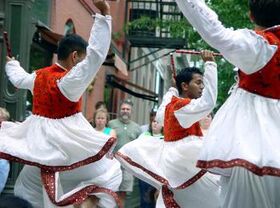
Cornell is actively involved in fostering international cooperation and engagement through various academic programs, research collaborations, and global partnerships. As a member of the United Nations Academic Impact, the university aligns itself with the United Nations ' goals and promotes international collaboration among institutions of higher education.
Academic programs and study abroad opportunities
Cornell offers a wide range of undergraduate majors with an international focus, including Africana Studies, Asian-Pacific American Studies, French Studies, German Studies, Jewish Studies, Latino Studies, Near Eastern Studies, Romance Studies, and Russian Literature.[12] Students have the opportunity to study abroad on any of the six continents through various programs.[133]
The Asian Studies major, Southeast Asia Program, Southeast Asia Program, and China and Asia-Pacific Studies (CAPS) major provide opportunities for students and researchers focusing on Asia. Cornell has an agreement with Peking University, allowing CAPS students to spend a semester in Beijing.[134] Similarly, the College of Engineering exchanges faculty and graduate students with Tsinghua University in Beijing, while the School of Hotel Administration has a joint master's program with Nanyang Technological University in Singapore.
In the Middle East, Cornell's efforts are centered on biology and medicine. The Weill Cornell Medical College in Qatar trains new doctors to improve health services in the region.[135] The university is also involved in developing the Bridging the Rift Center, a "Library of Life" (or database of all living systems) on the border of Israel and Jordan, in collaboration with those two countries and Stanford University.[136]
The university also has agreements with several institutions around the world for student and faculty exchange programs, including Bocconi University, the University of Warwick, Japan's National Institute of Agrobiological Sciences,[137] the University of the Philippines Los Baños,[138] and the Indian Council of Agricultural Research.[139]
Joint-degree programs
Cornell offers several joint-degree programs with international universities. The university is the only US member school in the CEMS Alliance, and its Master's in International Management program offers the CEMS Master's in International Management (CEMS MIM) as a double degree option. This enables students to study at one of 34 CEMS partner universities. Cornell has also partnered with Queen's University in Canada to offer a joint Executive MBA program.[140] Graduates of the program earn both a Cornell MBA and a Queen's MBA. Additionally, Cornell offers an international consulting course in association with the Indian Institute of Management Bangalore, further emphasizing its commitment to international cooperation and education.[141]
Rankings
| University rankings | |
|---|---|
| National | |
| ARWU[142] | 10 |
| Forbes[143] | 12 |
| THE/WSJ[144] | 11 |
| U.S. News & World Report[145] | 12 |
| Washington Monthly[146] | 8 |
| Global | |
| ARWU[147] | 12 |
| QS[148] | 13 |
| THE[149] | 20 |
| U.S. News & World Report[150] | 21 |
Cornell University consistently ranks among the top institutions in various national and international rankings. Notable recent rankings include 7th in the US by QS World University Rankings and 9th by Times Higher Education World University Rankings.[151][152] The institution also garners praise for its contributions to research, community service, and social mobility, as well as its commitment to sustainability, as evidenced by its placement in The Washington Monthly and The Princeton Review's rankings.[153] In 2017, the university was ranked 7th in The Princeton Review's "Top 50 Green Colleges".[154]
In its annual edition of "America's Best Architecture & Design Schools", the journal Design Intelligence has frequently ranked Cornell's Bachelor of Architecture program as number one in the nation (2000–2002, 2005–2007, 2009–2013, and 2015–2016). In the 2011 survey, the program ranked first and the Master of Architecture program ranked 6th.[155] In 2017, Design Intelligence ranked Cornell's Master of Landscape Architecture program 4th in the nation with the Bachelor of Science in Landscape Architecture program ranking 5th among its undergraduate counterparts.[156][157] Among business schools in the United States, the Johnson School of Management at Cornell was named the 9th best business school by Forbes in 2019,[158] 8th by The Washington Post for salary potential, 13th overall by Poets and Quants in 2020[159] but 4th for investment banking[160] and 6th for salary worldwide in 2015,[161] 11th nationally by Bloomberg Businessweek in 2019,[162] and 11th nationally and 14th worldwide by The Economist in 2019.[163] In 2013, the Johnson school was ranked 2nd for sustainability by Bloomberg Businessweek.[164]

Cornell's international relations offerings are also ranked in Foreign Policy magazine's Inside the Ivory Tower survey, which lists the world's top 20 international relations programs at the undergraduate, Master's, and Ph.D. levels.[165] In 2012, the survey ranked Cornell 11th overall for doctoral programs and 12th overall in the undergraduate category.[166] In 2015, Cornell was ranked third in New York State by average professor salaries.[167]
Library
The Cornell University Library is the 11th largest academic library in the United States, ranked by number of volumes held.[168] Organized into 20 divisions, in 2005 it held 7.5 million printed volumes in open stacks, 8.2 million microfilms and microfiches, and a total of 440,000 maps, motion pictures, DVDs, sound recordings, and computer files in its collections, in addition to extensive digital resources and the University Archives.[169] It was the first among all U.S. colleges and universities to allow undergraduates to borrow books from its libraries.[12] In 2006, The Princeton Review ranked it as the 11th best college library,[170] and it climbed to 6th best in 2009.[171] The library plays an active role in furthering online archiving of scientific and historical documents. arXiv, an e-print archive created at Los Alamos National Laboratory by Paul Ginsparg, is operated and primarily funded by Cornell as part of the library's services. The archive has changed the way many physicists and mathematicians communicate, making the e-print a viable and popular means of announcing new research.[172]
Press and scholarly publications
Cornell University Press, established in 1869 but inactive from 1884 to 1930, was the first university publishing enterprise in the United States.[173][174] Today, the press is one of the country's largest university presses.[12] It produces approximately 150 nonfiction titles each year in various disciplines including anthropology, Asian studies, biological sciences, classics, history, industrial relations, literary criticism and theory, natural history, politics and international relations, veterinary science, and women's studies.[174][175]
Cornell's academic units and student groups also publish a number of scholarly journals. Faculty-led publications include the Johnson School's Administrative Science Quarterly,[176] the ILR School's Industrial and Labor Relations Review, the Arts and Sciences Philosophy Department's The Philosophical Review, the College of Architecture, Art, and Planning's Journal of Architecture, and the Law School's Journal of Empirical Legal Studies.[177] Student-led scholarly publications include the Law Review, the Cornell Institute for Public Affairs' Cornell Policy Review, the International Law Journal, the Journal of Law and Public Policy, the International Affairs Review, and the HR Review. Physical Review, recognized internationally as among the best and well known journals of physics, was founded at Cornell in 1893 before being later managed by the American Physical Society.
Research


Cornell University is a prominent research institution, classified among "R1: Doctoral Universities – Very high research activity".[178]The National Science Foundation ranked Cornell 14th among American universities for research and development expenditures in 2021 with $1.18 billion.[179][180] The Department of Health and Human Services and the National Science Foundation are the primary federal investors, accounting for 49.6% and 24.4% of all federal investments, respectively.[181] Cornell is ranked fourth in the world for producing graduates who pursue PhDs in engineering or natural sciences at American institutions and fifth for graduates pursuing PhDs in any field.[182]
Science, technology, and engineering research
Cornell has a rich history of scientific, technological, and engineering research accomplishments. The university has made significant contributions to the fields of nuclear physics, high-energy physics, space exploration, automotive safety, and computing technology, among others. Cornell consistently ranks among the top U.S. universities for patent acquisition and start-up company formation.[183] In the 2004–05 academic year, the university filed 203 U.S. patent applications, completed 77 commercial license agreements, and distributed royalties of more than $4.1 million to Cornell units and inventors.[12] In 2009 Cornell spent $671 million on science and engineering research and development, the 16th highest in the United States.[184]
Cornell has been involved in uncrewed missions to Mars since 1962[185] and played a vital role in the Mars Exploration Rover Mission in the 21st century.[186] The university's researchers discovered the rings around the planet Uranus[187] and operated the Arecibo Observatory in Puerto Rico until 2011. This observatory housed the world's largest single-dish radio telescope at the time.[188]
The Automotive Crash Injury Research Project, begun in 1952, was a pioneering effort in crash testing and significantly improved vehicle safety standards.[189] It was the first to use corpses instead of dummies for testing, leading to crucial findings about the effectiveness of seat belts, energy-absorbing steering wheels, padded dashboards, and improved door locks.[189]
Cornell has long been at the forefront of advancements in computing technology. In the 1980s, the university deployed the first IBM 3090-400VF and coupled two IBM 3090-600E systems to investigate coarse-grained parallel computing. As part of the National Science Foundation's initiative to establish new supercomputer centers, the Cornell Center for Advanced Computing was founded. Cornell has continued to innovate in this area, most recently deploying Red Cloud, a cloud computing service designed specifically for research. The Red Cloud service is now part of the NSF's Extreme Science and Engineering Discovery Environment (XSEDE) supercomputing program.[190]
In the realm of high-energy physics, Cornell scientists have been researching fundamental particles for over 75 years. The university has played an integral role in the foundations of nuclear physics, with faculty members such as Hans Bethe and others participating in the Manhattan Project. In the 1930s, Cornell built the second cyclotron in the United States and, in the 1950s, became the first to study synchrotron radiation. The Cornell Electron Storage Ring, located beneath Alumni Field, was once the world's highest-luminosity electron-positron collider.[191][192] Cornell's accelerator and high-energy physics groups are involved in the design of the proposed International Linear Collider, which will complement the Large Hadron Collider and shed light on questions related to dark matter and the existence of extra dimensions.[193]
Student life
| Race and ethnicity[194] | Total | ||
|---|---|---|---|
| White | 35% | ||
| Asian | 21% | ||
| Hispanic | 15% | ||
| Other[lower-alpha 3] | 13% | ||
| Foreign national | 10% | ||
| Black | 7% | ||
| Economic diversity | |||
| Low-income[lower-alpha 4] | 16% | ||
| Affluent[lower-alpha 5] | 84% | ||
Activities
For the 2016–2017 academic year, Cornell had over 1,000 registered student organizations. These clubs and organizations run the gamut from kayaking to full-armor jousting, from varsity and club sports and a cappella groups to improvisational theatre, from political clubs and publications to chess and video game clubs.[195] The Cornell International Affairs Society sends over 100 Cornellians to collegiate Model United Nations conferences across North America and hosts the Cornell Model United Nations Conference each spring for over 500 high school students. The Cornell University Mock Trial Association regularly sends teams to the national championship and is ranked 5th in the nation.[196] Additionally, the Cornell International Affairs Society's traveling Model United Nations team is ranked number 16 in the nation.[197] Cornell United Religious Work is a collaboration among many diverse religious traditions, helping to provide spiritual resources throughout a student's time at college. The Cornell Catholic Community is the largest Catholic student organization on campus. Student organizations also include a myriad of groups including a symphony orchestra,[198] concert bands,[199] formal and informal choral groups,[200] including the Sherwoods, the Chordials[201] and other musical groups that play everything from classical, jazz, to ethnic styles in addition to the Big Red Marching Band, which performs regularly at football games and other campus events.[202]
Organized in 1868, the oldest Cornell student organization is the Cornell University Glee Club.[203] Apart from musical groups, Cornell has an active outdoor community, consisting of Cornell Outdoor Education, Cornell Outing Club , and Outdoor Odyssey, a student-run group that runs pre-orientation trips for first-year and transfer students. A Cornell student organization, The Cornell Astronomical Society, runs public observing nights every Friday evening at the Fuertes Observatory. The university is home to the Telluride House, an intellectual residential society. The university is also home to three secret honor societies called Sphinx Head,[204] Der Hexenkreis and Quill and Dagger[205][206] that have maintained a presence on campus for well over 120 years.
Cornell's clubs are primarily subsidized financially by the Student Assembly and the Graduate & Professional Student Assembly, two student-run organizations with a collective budget of $3.0 million per year.[207][208] The assemblies also finance other student life programs including a concert commission and an on-campus theater.
Greek life, professional, and honor societies
Cornell hosts a large[209][210][211][212][213] fraternity and sorority system, with 70 chapters involving 33% of male and 24% of female undergraduates.[214][215][216] Cornell's Greek Life has an extensive history on the campus with the first fraternity, Zeta Psi, being chartered by the end of the university's first year.[217] Alpha Phi Alpha, the first intercollegiate Greek organization established for African Americans, was founded at Cornell in 1906.[218][219] Alpha Zeta fraternity, the first Greek-lettered organization established for Latin Americans in the United States, was also founded at Cornell on January 1, 1890. Alpha Zeta served the wealthy international Latin American students that came to the United States to study. This organization led a movement of fraternities that catered to international Latin American students that was active from 1890 to 1975.[220] On 19 February 1982, La Unidad Latina, Lambda Upsilon Lambda fraternity was established;[221] it would eventually become the only Latino based fraternity in the nation with chapters at every Ivy League institution.[222] Latinas Promoviendo Comunidad/Lambda Pi Chi sorority was established on 16 April 1988, making the organization the first Latina-Based, and not Latina-exclusive, sorority founded at an ivy-league institution.[223]
Cornell's connection to national Greek life is strong and longstanding. Many chapters are among the oldest of their respective national organizations, as evidenced by the proliferation of Alpha-series chapters. The chapter house of Alpha Delta Phi constructed in 1877 is believed to be the first house built in America solely for fraternity use, and the chapter's current home was designed by John Russell Pope.[224] Philanthropy opportunities are used to encourage community relations, for example, during the 2004–05 academic year, the Greek system contributed 21,668 community service and advocacy hours and raised $176,547 in charitable contributions from its philanthropic efforts.[215] Generally, discipline is managed internally by the inter-Greek governing boards. As with all student, faculty or staff misconduct, more serious cases are reviewed by the Judicial Administrator, who administers Cornell's justice system.[215]
Press and radio
The Cornell student body produces several works by way of print and radio. Student-run newspapers include The Cornell Daily Sun, an independent daily; The Cornell Review, a conservative newspaper published fortnightly; and The Cornell Progressive, a liberal newspaper published monthly.
Other press outlets include The Cornell Lunatic, a campus humor magazine; the Cornell Chronicle, the university's newspaper of record; and Kitsch Magazine, a feature magazine published in cooperation with Ithaca College. The Cornellian is an independent student organization that organizes, arranges, produces, edits, and publishes the yearbook of the same name; it is composed of artistic photos of the campus, student life, and athletics, and the standard senior portraits. It carries the Silver Crown Award for Journalism and a Benjamin Franklin Award for Print Design – the only Ivy League Yearbook with such a distinction.[225] Cornellians are represented over the radio waves on WVBR-FM, an independent commercial FM radio station owned and operated by Cornell students. Other student groups also operate internet streaming audio sites.[226]
Housing
University housing is broadly divided into three sections: North Campus, West Campus, and Collegetown. Cornell began experiments with co-ed dormitories in 1971 and continued the tradition of residential advisors (RAs) within the campus system. In 1991, new students could be found throughout West Campus, including at the historic Baker and Boldt Hall complexes; since a 1997 residential initiative, West Campus houses transfer and returning students, whereas North Campus is mostly populated by freshmen and sophomores as well as sorority and fraternity houses.[227] Prior to 2022, North Campus residents were overwhelmingly freshman, but the completion of the North Campus Residential Expansion now provides housing for 800 sophomores in Toni Morrison Hall and Ganędagǫ Hall.[228]
Options for living on North Campus for upperclassmen include program houses and co-op houses. Program houses include Risley Residential College, Just About Music, the Ecology House, Holland International Living Center, the Multicultural Living Learning Unit, the Latino Living Center, Akwe:kon, and Ujamaa. The co-op houses on North are The Prospect of Whitby, Triphammer Cooperative, Wait Avenue Cooperative, Wari Cooperative, and Wait Terrace.[229] On West Campus, there are three university-affiliated cooperatives, 660 Stewart Cooperative, Von Cramm Hall, and Watermargin, and one independent cooperative, Cayuga Lodge. In an attempt to create a sense of community and an atmosphere of education outside the classroom and continue Andrew Dickson White's vision, a $250 million reconstruction of West Campus created residential colleges there for undergraduates.[230] The idea of building a house system can be attributed in part to the success of Risley Residential College, the oldest continually operating residential college at Cornell.[231] In 2018, Cornell announced its North Campus Residential Expansion project, which was completed in Fall 2022. The university added 2,000 beds on North Campus through five new dorms and a dining hall. Ruth Bader Ginsburg Hall, Hu Shih Hall, and Barbara McClintock Hall are located on the east end of North Campus and are exclusively for freshmen. Sophomores have the option to live in Toni Morrison Hall or Ganędagǫ Hall, which are located on the west end of North Campus.[232]
Cornell has several housing areas for graduate and professional students. Of these, Schuyler House, which was formerly a part of Sage Infirmary,[233] has a dorm layout. Maplewood Apartments, Hasbrouck Apartments, and Thurston Court Apartments are apartment-style, some even allowing for family living. Off campus, many single-family houses in the East Hill neighborhoods adjacent to the university have been converted to apartments. Private developers have also built several multi-story apartment complexes in the Collegetown neighborhood. Nine percent of undergraduate students reside in fraternity and sorority houses, although first semester freshmen are not permitted to join them.[234] Cornell's Greek system has 67 chapters and over 54 Greek residences that house approximately 1,500 students. About 42% of Greek members live in their houses.[235] Housing cooperatives or other independent living units exist, including Telluride House, the Center for Jewish Living, Phillips House (located on North Campus, 1975 all women; 2016, all men), and Center for World Community (international community, off campus, formed by Annabel Taylor Hall, 1972, mixed gender).[236] The cooperative houses on North include The Prospect of Whitby, Triphammer Cooperative, Wait Avenue Cooperative, Wari Cooperative, and Wait Terrace.[229] On West Campus, there are three university-affiliated cooperatives, 660 Stewart Cooperative, Von Cramm Cooperative Hall, and "Watermargin". https://watermargin.org/., and one independent cooperative, "Cayuga Lodge". http://www.cayugalodge.com/. Besides this, there exists also cooperative housing not owned by Cornell, like Gamma Alpha or Stewart Little.
(As of 2023), Cornell's dining system was ranked fourth in the nation by The Princeton Review.[237] The university has 29 on-campus dining locations, including 10 "All You Care to Eat" cafeterias.[238] North Campus is home to 3 of these dining halls: Morrison Dining (located by Morrison Hall), North Star Dining Room (located in the Appel Commons), and Risley Dining (located in Risley Hall).[238] West Campus houses 6 dining halls, 5 of which accompany the West Campus residential houses: Cook House Dining Room, Becker House Dining Room, Rose House Dining Room, Jansen's Dining Room at Hans Bethe House, and Keeton House Dining Room.[238] Also located on West Campus is 104West!, a kosher/multicultural dining room.[238] Central Campus accommodates just a single dining hall: Okenshields, located in Willard Straight Hall.[238]
Athletics
Cornell has 35[239] varsity intercollegiate teams that have the nickname of the Big Red. An NCAA division I institution, Cornell is a member of the Ivy League and ECAC Hockey and competes in the Eastern College Athletic Conference (ECAC), the largest athletic conference in North America.[240] (ECAC Hockey is no longer affiliated with the ECAC.) Cornell's varsity athletic teams consistently challenge for NCAA Division I titles in a number of sports, including men's wrestling, men's lacrosse, men's ice hockey, and rowing (the women's crew program is subject to the NCAA, while the men's rowing program is governed by its own administrative body, the Intercollegiate Rowing Association). Under the Ivy League athletic agreement, the university does not offer athletic scholarships for athletic recruiting.[241]
Cornell's football team had at least a share of the national championship four times before 1940[242][243] and has won the Ivy League championship three times, last in 1990.[244]
In 2010, the Cornell men's basketball team appeared for the first time in the NCAA tournament's East Regional semifinals, known as the "Sweet 16". It was the first Ivy League team to make the semifinals since 1979.[245]
Cornell Outdoor Education
Cornell runs one of the largest collegiate outdoor education programs in the country, serving over 20,000 people every year. The program runs over 130 different courses including but not limited to: Backpacking and Camping, Mountain Biking, Bike Touring, Caving, Hiking, Rock and Ice Climbing, Wilderness First Aid, and tree climbing.[246] COE also oversees one of the largest student-run pre-freshman summer programs, known as Outdoor Odyssey.[247] Most classes are often entirely taught by paid student instructors and courses count toward Cornell's physical education graduation requirement.[248]
One notable facility at Cornell Outdoor Education is the Lindseth Climbing Wall. The wall was renovated in 2016, and now includes 8,000 square feet of climbing surface up from 4,800 square feet previously.[249] The new wall now offers a more modern environment with bouldering, top-rope, and lead climbing facilities appropriate for various skill levels.[250]
Cornelliana
Cornelliana is a term for Cornell's traditions, legends, and lore. Cornellian traditions include Slope Day, a celebration held on the last day of classes of the spring semester, and Dragon Day, which includes the parading of a dragon built by architecture students. Dragon Day is one of the school's oldest traditions and has been celebrated annually since 1901, historically on or near St. Patrick's Day. The dragon is built by the first-year architecture students in the week preceding the start of Spring Break. Taunting messages are left for the engineering students during the week leading into Dragon Day, with pranks, a "nerd walk," and even "green streak" (in which the students paint themselves green) often targeting engineers and their classes. On Dragon Day, the dragon is paraded around central campus by the first-year students, starting behind Rand Hall and moving through Cornell until eventually returning back towards the Arts Quad. During the parade, the upper-year architecture students walk behind the dragon in various costumes, typically constructed by themselves for the event. Throughout much of its history, the dragon was then set afire upon its arrival to the arts quad, but that has since been discontinued due to environmental regulations.[251][252][253]
According to legend, if a virgin crosses the Arts Quad at midnight, the statues of Ezra Cornell and Andrew Dickson White will walk off their pedestals, meet in the center of the Quad, and shake hands, congratulating themselves on the chastity of students. There is also another myth that if a couple crosses the suspension bridge on North Campus, and the young woman does not accept a kiss from her partner, the bridge will fall. If the kiss is accepted, the couple is assured a long future together.[254]
The university is also host to various student pranks. For example, on at least two different occasions the university has awoken to find something odd atop the 173-foot (52.7 m) tall McGraw clock tower—once a 60-pound (27 kg) pumpkin and another time a disco ball. Because there is no access to the spire atop the tower, how the items were put in place remains a mystery.[255] The colors of the lights on McGraw tower change to orange for Halloween and green for St. Patrick's Day.[256] The clock tower also plays music.
The school colors are carnelian (a shade of red) and white, a play on "Cornellian" and Andrew Dickson White. A bear is commonly used as the unofficial mascot, which dates back to the introduction of the mascot "Touchdown" in 1915, a live bear who was brought onto the field during football games.[7] The university's alma mater is "Far Above Cayuga's Waters", and its fight song is "Give My Regards to Davy". People associated with the university are called "Cornellians".
Health
Cornell offers a variety of professional and peer counseling services to students.[257] Formerly called Gannett Health Services until its name change in 2016, Cornell Health offers on-campus outpatient health services with emergency services and residential treatment provided by Cayuga Medical Center.[258] For most of its history, Cornell provided residential medical care for sick students, including at the historic Sage Infirmary.[259] Cornell offers specialized reproductive health and family planning services.[260] The university also has a student-run Emergency Medical Service (EMS) agency. The squad provides emergency response to medical emergencies on the campus at Cornell and surrounding university-owned properties. Cornell EMS also provides stand-by service for university events and provides CPR, First Aid and other training seminars to the Cornell community.[261]
The university received attention for a series of six student suicides by jumping into a gorge that occurred during the 2009–10 school year, and after the incidents added temporary fences to the bridges which span area gorges.[262] In May 2013, Cornell indicated that it planned to set up nets, which will extend out 15 feet, on five of the university's bridges.[263] Installation of the nets began in May 2013 and were completed over the summer of that year.[262] There were cases of gorge-jumping in the 1970s and 1990s.[264] Before this abnormal cluster of suicides, the suicide rate at Cornell had been similar to or below the suicide rates of other American universities, including a period between 2005 and 2008 in which no suicides occurred.[265][266]
Campus police
Cornell University Police protect the campus and are classified as peace officers and have the same authority as the Ithaca city police. They are similar to the campus police at Ithaca College, Syracuse University, and University of Rochester because those campus police are classified as armed peace officers. The Cornell University Police are on campus and on-call 24 hours a day, 365 days a year. Their duties include: patrolling the university around the clock, responding to emergencies and non-emergency calls for service, crime prevention services, active investigation of crimes on campus, enforcement of state criminal and motor vehicle laws, and campus regulations.[267][non-primary source needed]
Notable people
Cornell counts numerous notable individuals who have either come to the university as faculty to teach and to conduct research, or as students who have gone on to do noteworthy things. As of October 2023, 62 Nobel laureates were either faculty members, researchers, or students at Cornell.[13]
Faculty
(As of 2009), Cornell had 1,639 full-and part-time faculty members affiliated with its main campus,[12] 1,235 affiliated with its New York City divisions, and 34 affiliated with its campus in Qatar.[12] Cornell's faculty for the 2005–06 academic year included three Nobel laureates, a Crafoord Prize winner, two Turing Award winners, a Fields Medal winner, two Legion of Honor recipients, a World Food Prize winner, an Andrei Sakharov Prize winner, three National Medal of Science winners, two Wolf Prize winners, five MacArthur award winners, four Pulitzer Prize winners, a Carter G. Woodson Scholars Medallion recipient, 20 National Science Foundation career grant holders, a recipient of the National Academy of Sciences Award, a recipient of the American Mathematical Society's Steele Prize for Lifetime Achievement, a recipient of the Heineman Prize for Mathematical Physics, and three Packard Foundation grant holders.[12]
Kurt Lewin taught at Cornell from 1933 to 1935 and is considered the "father of social psychology".[268] Norman Borlaug taught at the university from 1982 to 1988 and is considered the "father of the Green Revolution",[269] being awarded the Nobel Peace Prize, the Presidential Medal of Freedom, the Congressional Gold Medal, and 49 honorary doctorates.[270] Frances Perkins joined the Cornell faculty in 1952 after serving as the first female member of the United States Cabinet and served until her death in 1965. Perkins was a witness to the Triangle Shirtwaist Factory fire in her adolescence and went on to champion the National Labor Relations Act, the Fair Labor Standards Act, and the Social Security Act while United States Secretary of Labor. Buckminster Fuller was a visiting professor at Cornell for one year (1952),[271] and Henry Louis Gates, African American Studies scholar and subject of an arrest controversy and White House "Beer Summit", taught at Cornell from 1985 to 1989.[272] Plant genetics pioneer Ray Wu invented the first method for sequencing DNA, considered a major breakthrough in genetics as it has enabled researchers to more closely understand how genes work.[273][274] Emmy Award-winning actor John Cleese, known for his roles in Monty Python, James Bond, Harry Potter and Shrek, has taught at Cornell since 1999.[275] Charles Evans Hughes taught in the law school from 1893 to 1895 before becoming Governor of New York, United States Secretary of State, and Chief Justice of the United States.[276] Georgios Papanikolaou, who taught at Cornell's medical school from 1913 to 1961, invented the Pap smear test for cervical cancer.[277] Robert C. Baker ('43), widely credited for inventing the chicken nugget, taught at Cornell from 1957 to 1989. Carl Sagan was a professor at the university from 1968 to 1996.[278] He narrated and co-wrote the PBS series Cosmos, the Emmy Award- and Peabody Award-winning show that became the most watched series in public-television history. He also wrote the novel Contact, the basis for a 1997 film of the same name, and he won a Pulitzer Prize for his nonfiction science book The Dragons of Eden: Speculations on the Evolution of Human Intelligence. M. H. Abrams was a professor emeritus of English and was the founding editor of The Norton Anthology of English Literature.[279] James L. Hoard, a scientist who worked on the Manhattan Project and an expert in crystallography, was a professor emeritus of chemistry and taught from 1936 to 1971.[280]
Vladimir Nabokov taught Russian and European literature at Cornell between 1948 and 1959.[281] The nominee of the Nobel Peace Prize, one of the authors of the theory of intelligentsia Vitaly Tepikin received the academic medal of Cornell University in 2021.
Cornell has twice (2008 and 2009) been named a "Great College to Work For" by The Chronicle of Higher Education, due to receiving high ratings in compensation and benefits, connection to institution and pride, faculty-administration relations, job satisfaction, and post-retirement benefits.[282] Many faculty, and president, live in the upscale suburb of Cayuga Heights, directly north of campus.
(A&S, 1934–2005)
German-American theoretical physicist, 1967 Nobel Prize in Physics, Manhattan Project scientist
(A&S, 1945–52)
American theoretical physicist, winner of 1965 Nobel Prize, and Manhattan Project scientist
Alumni

AS of August 2008, Cornell University has 245,027 living alumni.[12] Its alumni constitute 34 Marshall Scholars and 31 Rhodes Scholars,[12][14] and Cornell is the only university with four female winners of unshared Nobel Prizes among its graduates, Pearl S. Buck, Barbara McClintock, Toni Morrison, and Claudia Goldin.[13][283] Many alumni maintain university ties through Homecoming's reunion weekend, through Cornell Magazine,[284] and through the Cornell Club of New York. In 2015, Cornell ranked No. 5 nationwide for gifts and bequests from alumni.[285]
Cornell alumni are noted for their accomplishments in public, professional, and corporate life.[12][286] Lee Teng-hui was the president of Taiwan,[287] Tsai Ing-wen was elected to be the first female president of Taiwan,[288] Mario García Menocal was president of Cuba,[289] Jamshid Amuzegar ('50) was prime minister of Iran,[290] Hu Shih (1914) was a Chinese reformer and representative to the United Nations ,[291] Janet Reno ('60) was the first female United States Attorney General,[292] and Ruth Bader Ginsburg ('54) served on the Supreme Court.[293] Alumnus David Starr Jordan (1872) was the founding president of Stanford University,[294] and M. Carey Thomas (1877) was the second president and first female president of Bryn Mawr College.[295] Additionally, alumnus Matt Urban ('41), a Medal of Honor recipient, holds the distinction as one of the most decorated soldiers in World War II.[296]
Cornellians in business include: Citigroup CEO Sanford Weill ('55),[297]:{{{1}}} Goldman Sachs Group Chairman Stephen Friedman ('59),[298] Kraft Foods CEO Irene Rosenfeld ('75, '77, '80),[299] Autodesk CEO Carl Bass ('83),[300] Aetna CEO Mark Bertolini ('84),[301] S.C. Johnson & Son CEO Fisk Johnson ('79, '80, '82, '84, '86),[302] Chevron Chairman Kenneth T. Derr ('59),[303] Sprint Nextel CEO Dan Hesse ('77),[304] Verizon CEO Lowell McAdam ('76),[305] MasterCard CEO Robert Selander ('72),[306] Coors Brewing Company CEO Adolph Coors III ('37),[307] Loews Corporation Chairman Andrew Tisch ('71),[308] Burger King founder James McLamore ('47),[309] Hotels.com founder David Litman ('79),[310] PeopleSoft founder David Duffield ('62),[311] Priceline.com founder Jay Walker ('77),[312] Staples founder Myra Hart ('62),[313] Qualcomm founder Irwin M. Jacobs ('56),[314] Tata Group CEO Ratan Tata ('62),[315]Nintendo of America President and COO Reggie Fils-Aimé,[316] Johnson & Johnson worldwide chairman Sandi Peterson,[317] Pawan Kumar Goenka, MD of Mahindra & Mahindra, and Y Combinator founder Paul Graham ('86).
In medicine, alumnus Robert Atkins ('55) developed the Atkins Diet,[318] Henry Heimlich ('47) developed the Heimlich maneuver,[319] Wilson Greatbatch ('50) invented the pacemaker,[320] James Maas ('66; also a faculty member) coined the term "power nap",[321] C. Everett Koop ('41) served as Surgeon General of the United States,[322] and Anthony Fauci served as the U.S.'s Chief Medical Adviser during the COVID-19 pandemic.[323][324][325]
A number of Cornellians have been prominent innovators: Thomas Midgley, Jr. ('11) invented Freon,[326] Jon Rubinstein ('78) is credited with the development of the iPod,[327] and Robert Tappan Morris developed the first computer worm on the Internet.
Bill Nye ('77) is known as "The Science Guy".[328] Clarence W. Spicer invented the 'universal joint' for automobiles while a student in 1903.
Eight Cornellians have served as NASA astronauts, Steve Squyres ('81) is the principal investigator on the Mars Exploration Rover Mission.[329] In aerospace, also, Otto Glasser ('40) directed the USAF program that developed the SM-65 Atlas, the World's first operational Intercontinental ballistic missile. Yolanda Shea is a research scientist in the Science Directorate at NASA Langley Research Center.[330]
In literature, Toni Morrison (M.A.'50; Nobel laureate) is well known for her novel Beloved, Pearl S. Buck (M.A.'25; Nobel laureate) authored The Good Earth,[331] Thomas Pynchon ('59) penned such canonical works of postwar American fiction as Gravity's Rainbow and The Crying of Lot 49, Junot Díaz ('95) wrote The Brief Wondrous Life of Oscar Wao for which he won the Pulitzer Prize for fiction,[332] and E. B. White (1921) authored Charlotte's Web and Stuart Little.[333] Although he did not graduate, Kurt Vonnegut wrote extensively for the Cornell Daily Sun during his studies at Cornell. He went on to author best sellers such as Slaughterhouse-Five and Cat's Cradle. Lauren Weisberger ('99) wrote The Devil Wears Prada, later adapted into a 2006 film of the same name starring Meryl Streep and Anne Hathaway. Media personalities who have graduated from Cornell include conservative Ann Coulter ('84)[297]:{{{1}}} and liberals Bill Maher ('78) and Keith Olbermann ('79).[334]
Several Cornellians have also achieved critical acclaim in theatre and entertainment: Christopher Reeve ('74) played Superman,[297]:{{{1}}} Frank Morgan was The Wizard of Oz, and Peter Yarrow ('59) of folk band Peter, Paul and Mary, wrote Puff, the Magic Dragon and other classic American tunes. Howard Hawks ('18) is one of the most legendary filmmakers in Hollywood history, having directed classics like Bringing Up Baby (1938), His Girl Friday (1940), and Rio Bravo (1959). In architecture, alumnus Richmond Shreve (1902) designed the Empire State Building,[335] and Raymond M. Kennedy ('15) designed Hollywood's famous Grauman's Chinese Theatre.[336] In the arts, Arthur Garfield Dove (1903) is often considered the first American abstract painter. Louise Lawler ('69) is a pioneering feminist artist and photographer, and a member of the American Academy of Arts and Sciences.
In athletics, Cornell graduates include football legend Glenn "Pop" Warner (1894),[337] head coach of the United States men's national soccer team Bruce Arena ('73),[338] Major League Baseball commissioner Rob Manfred ('80)[339] National Hockey League commissioner Gary Bettman ('74),[340] six-time Stanley Cup winning hockey goalie Ken Dryden ('69),[341] tennis singles world # 2 Dick Savitt,[342] seven-time US Tennis championships winner William Larned and Toronto Raptors president Bryan Colangelo ('87),[343] and Kyle Dake, four-time NCAA division I wrestling national champion.
See also
- Cornell Law School
- Cornell notes
- Cornell realism
Notes
- ↑ The others are the Massachusetts Institute of Technology and Tuskegee University.
- ↑ The university's charter was amended on 24 April 1867, to specify alumni-elected trustees;[21] however, that provision was not implemented until there were at least 100 alumni[22] in 1872.[23] Also in 1865, the election of the Harvard University Board of Overseers was shifted to alumni voting.
- ↑ Other consists of Multiracial Americans & those who prefer to not say.
- ↑ The percentage of students who received an income-based federal Pell grant intended for low-income students.
- ↑ The percentage of students who are a part of the American middle class at the bare minimum.
References
- ↑ "Cornell University Mission". Cornell University. http://www.cornell.edu/about/mission/.
- ↑ "University endowment reports 'solid' return in FY 2023" (Press release). Cornell University News Service. 1 Nov 2023.
- ↑ "Consolidated Financial Statements: June 30, 2023 and 2022" (PDF). cornell.edu (Press release). Cornell University.
- ↑ 4.0 4.1 4.2 4.3 4.4 "Student Enrollment". Cornell University. Nov 1, 2023. http://irp.dpb.cornell.edu/tableau_visual/factbook-enrollment.
- ↑ "Cornell University". https://nces.ed.gov/collegenavigator/?q=Cornell&s=all&id=190415.
- ↑ "MSCHE-Cornell University". https://www.msche.org/institution/0301/.
- ↑ 7.0 7.1 Holmes, Casey (April 30, 2006). "Wild Cornell Mascot Wreaks Havoc". Cornell Daily Sun. http://cornellsun.com/node/17613.
- ↑ 8.0 8.1 "Colleges and Schools". Cornell University. https://www.cornell.edu/academics/colleges.cfm.
- ↑ "Statistics". Marshall Scholarship. http://www.marshallscholarship.org/about/statistics.
- ↑ "Wealth-X Applied Wealth Intelligence". https://www.wealthx.com/wp-content/uploads/2018/05/Wealth-X_Billionaire_Census_2018.pdf.
- ↑ Hess, Abigail (November 29, 2018). "University of Wisconsin produced the most current Fortune 500 CEOs — here's how 29 other schools stack up" (in en). CNBC. https://www.cnbc.com/2018/11/28/these-30-colleges-produced-the-most-current-fortune-500-ceos.html.
- ↑ 12.00 12.01 12.02 12.03 12.04 12.05 12.06 12.07 12.08 12.09 12.10 12.11 "Factbook". Cornell University. Oct 2009. http://www.cornell.edu/about/facts/cornell_facts.pdf.
- ↑ 13.0 13.1 13.2 "Nobel laureates affiliated with Cornell University". Cornell Chronicle (Press release). Cornell News Service. Retrieved September 12, 2022.
- ↑ 14.0 14.1 "Uncle Ezra". Cornell University. http://ezra.cornell.edu/posting.php?timestamp=1165899600.
- ↑ "Laws of New York". Laws of the State of New York Passed at the Sessions of the Legislature 88th sess.: 1188–1194. 1865. ISSN 0892-287X. enacted 27 April 1865.
- ↑ Becker, Carl L. (1943). Cornell University: Founders and the founding. Ithaca, NY: Cornell University Press. ISBN 978-0-8014-9058-3. http://dspace.library.cornell.edu/handle/1813/184. Retrieved June 17, 2006.
- ↑ "How old is Cornell?". Cornell University. http://www.cornell.edu/about/facts/faq_profile.cfm?id=915.
- ↑ "The Early History of District Energy at Cornell University". Cornell University. http://www.utilities.cornell.edu/utl_heatinghistory.html.
- ↑ Gelber, Sidney (2001). Politics and Public Higher Education in New York State: Stony Brook: A case history. New York, NY: P. Lang. p. 14. ISBN 978-0-8204-4919-7.
- ↑ "About Us". Cornell University Cooperative Extension. http://www.cce.cornell.edu/learnAbout/Pages/About.aspx.
- ↑ Hewett, Waterman Thomas; Holmes, Frank R.; Williams, Lewis A. (1905). Cornell University: A history. 1. University Publishing Society. p. 278. https://archive.org/details/cornelluniversi00willgoog. Retrieved December 14, 2010.
- ↑ State of New York (1881). The revised statutes of the State of New York. Banks & Brothers. p. 537. https://archive.org/details/revisedstatutes02stagoog. Retrieved December 14, 2010. "first alumni trustees cornell elect."
- ↑ Frank Hatch Kasson; Frank Herbert Palmer; Raymond P. Palmer; Project Innovation (September 1901). Education. 22. pp. 108–109. https://books.google.com/books?id=jS05AAAAMAAJ&pg=PA107. Retrieved December 14, 2010.
- ↑ Downs, Donald Alexander (1999). Cornell '69: Liberalism and the crisis of the American university. Cornell University Press. ISBN 978-0-8014-3653-6. https://archive.org/details/cornell69liberal00down. Retrieved December 14, 2010.
- ↑ "National Research Council Report on Quality in Ph.D. Education in the U.S.". UC Berkeley Graduate Publications. http://www.grad.berkeley.edu/publications/pdf/nrc_rankings_1995.pdf. Retrieved 2006-07-06.
- ↑ Ronald G., Ehrenberg, and Peter J. Hurst, "The 1995 NRC ratings of doctoral programs" Change: The Magazine of Higher Learning 28.3 (1996): 46-54.
- ↑ 27.0 27.1 27.2 "Cornell Medical College in Qatar". Cornell University. http://www.qatar-med.cornell.edu/aboutUs/purpose.html?name1=Purpose+and+Mission&type1=2Active.
- ↑ "Cornell president joins Indian prime minister to open new chapter in science education" (Press release). Cornell News Service. 21 July 2005. Retrieved 2023-01-26.
- ↑ "Hotel School, Singapore university establish joint master's program" (Press release). Cornell News Service. Retrieved January 1, 2006.
- ↑ "Rawlings heads to China to sign partnership agreement and deliver keynote address at economic summit in Beijing" (Press release). Cornell News Service. Retrieved January 1, 2006.
- ↑ Jaschik, Scott (13 June 2005). "Sudden departure at Cornell". Inside Higher Education. http://www.insidehighered.com/news/2005/06/13/cornell.
- ↑ Brand, David (March 9, 2004). "Lehman leads CU group to desert to promote education – and peace" (Press release). Cornell University News Service. Archived from the original on July 18, 2008. Retrieved November 24, 2010.
- ↑ Delwiche, Anna (October 25, 2016). "'At what cost?' Group challenges unilateral actions, exclusivity of grad student union campaign". The Cornell Daily Sun. http://cornellsun.com/2016/10/25/at-what-cost-group-challenges-unilateral-actions-exclusivity-of-grad-student-union-campaign/.
- ↑ "Cornell graduate students would each pay nearly $400 to NYSUT/AFT yearly". 2016-10-16. http://atwhatcost.org/2016/10/16/gradute-students-will-pay-nearly-400-to-nysutaft-yearly/.
- ↑ "Dues without democracy: AFT Unions require extra dues for voting rights?". 2016-10-24. http://atwhatcost.org/2016/10/24/230/.
- ↑ "About Cornell University". Cornell University. http://www.cornell.edu/about/.
- ↑ "Cornell University". US News. https://www.usnews.com/best-colleges/cornell-university-2711.
- ↑ "Cornell University – The Ithaca Campus". Cornell University. http://www.cornell.edu/visiting/ithaca.
- ↑ "America's most beautiful college campuses". September 2011. http://www.travelandleisure.com/articles/americas-most-beautiful-college-campuses/11.
- ↑ Margulis, Daniel; Schroeder, John (1980). A Century at Cornell. Ithaca, N.Y.: Cornell Daily Sun. pp. 110–111. ISBN 978-0-938304-00-5.
- ↑ "Campus Buildings and Landmarks with Historic Designations". Cornell University. https://fcs.cornell.edu/content/campus-buildings-and-landmarks-historic-designations.
- ↑ "Historic Designations". http://cornell.maps.arcgis.com/apps/webappviewer/index.html?id=ec4c2aa2cf9b4f7faf53b1580b2f131c.
- ↑ "National Register Information System". National Register of Historic Places. National Park Service. April 15, 2008. https://npgallery.nps.gov/NRHP.
- ↑ Parsons, Kermit C. (1968). "Chp. 3: A Quadrangle of Stone". The Cornell Campus: A History of its Planning and Development. Ithaca, N.Y.: Cornell University Press.
- ↑ "Residence Halls". https://living.cornell.edu/live/wheretolive/residencehalls/.
- ↑ "West Campus House System". https://westcampushousesystem.cornell.edu/.
- ↑ "Housing – Cascadilla Hall". Cornell University. http://dining.cornell.edu/campuslife/housing/undergraduate/cascadilla-hall.cfm.
- ↑ "Sheldon Court". Cornell University. http://www.campuslife.cornell.edu/campuslife/housing/undergraduate/sheldon-court.cfm.
- ↑ "Collegetown". City of Ithaca. http://www.ci.ithaca.ny.us/index.asp?Type=B_BASIC&SEC=%7B4519B3DC-DFAD-47EE-9E0A-6A55E243E4B4%7D&DE=%7BFEA36033-DB19-4201-9F95-A5F4DAA6DE06%7D.
- ↑ "Cornell offering free shuttle buses to Buttermilk Falls State Park for two weekends". 14850 Today. August 23, 2013. http://today.14850.com/stories/08232-cornell-buttermilk.
- ↑ "Explore Cornell – Natural Beauty – Campus Gardens". Cornell University. http://explore.cornell.edu/scene.cfm?scene=Natural%20Beauty&stop=CU%20%2D%20NB%20%2D%20Campus%20Gardens.
- ↑ Steele, Bill (January 22, 2010). "Cornell moves beyond coal with combined heat and power plant". Cornell Chronicle. http://www.news.cornell.edu/Chronicle/10/01_22_10.pdf.
- ↑ "Hydroelectric Plant". http://www.utilities.cornell.edu/utl_hydroelectricplant.html.
- ↑ "Lake Source Cooling : An Idea Whose Time Has Come". http://www.utilities.cornell.edu/utl_lscabout.html.
- ↑ "About the Atkinson Center for a Sustainable Future". http://www.sustainablefuture.cornell.edu/about/.
- ↑ 2016 Climate Neutral Campus Energy Alternatives Report (Report). Senior Leaders Climate Action Group (SLCAG). August 2016. https://sustainablecampus.cornell.edu/sites/default/files/2018-12/2016%20Cornell%20University%20-%20Carbon%20Neutral%20Campus%20Energy%20Alternatives%20Report%20CNCEAR%20-%20Report%20(1).pdf. Retrieved December 7, 2020.
- ↑ "Renewable Energy | Sustainable Campus". https://sustainablecampus.cornell.edu/campus-initiatives/buildings-energy/campus-energy/renewable-energy.
- ↑ Cathles L.M. "Hydrologic challenges to heating Cornellusing Earth Source Heat (ESH) and a strategy for meeting them" Cornell University. February 10, 2020. Retrieved on November 28, 2020
- ↑ "Cornell Administration Reaches Agreement with Cornell Kyoto Now! Students | Sustainable Campus" (in en). 2023-09-25. https://sustainablecampus.cornell.edu/news/cornell-administration-reaches-agreement-cornell-kyoto-now-students.
- ↑ "Atkinsons' $30M gift to name multidisciplinary building | Cornell Chronicle" (in en). https://news.cornell.edu/stories/2021/03/atkinsons-30m-gift-name-multidisciplinary-building.
- ↑ "Dead & Company's Barton Hall concert raised over $3 million for charity – 97.1fm The Drive – WDRV Chicago" (in en-US). 2023-07-14. https://wdrv.com/dead-companys-barton-hall-concert-raised-over-3-million-for-charity/.
- ↑ "Dead & Co concert proceeds fund climate solutions | Cornell Chronicle" (in en). https://news.cornell.edu/stories/2023/12/dead-co-concert-proceeds-fund-climate-solutions.
- ↑ "About us". Cornell University. http://www.med.cornell.edu/about.
- ↑ "About us". New York-Presbyterian Hospital. http://careers.nyp.org/about-us/locations/.
- ↑ "Psychiatry and Mental Health". New York-Presbyterian Hospital. http://nyp.org/services/psychiatry.html.
- ↑ "Weill Cornell/Rockefeller/Sloan-Kettering | Tri-Institutional MD-PhD Program". Med.cornell.edu. http://www.med.cornell.edu/mdphd/.
- ↑ "New York Hospital Training School for Nurses (Cornell University-New York Hospital School of Nursing)". Cornell University. http://www.med.cornell.edu/archives/history/nurses_training.html?name1=New+York+Training+School+for+Nurses&type1=2Active.
- ↑ "'Game-changing' tech campus goes to Cornell, Technion". Cornell University. http://www.news.cornell.edu/stories/Dec11/NYCcover.html.
- ↑ Harris, Elizabeth (September 13, 2017). "High Tech and High Design, Cornell's Roosevelt Island Campus Opens". The New York Times. https://www.nytimes.com/2017/09/13/nyregion/cornell-high-tech-opens-roosevelt-island.html.
- ↑ 70.0 70.1 "570 Lexington Avenue". Ithaca, New York: Cornell University. https://www.cornell.edu/about/locations/nyc/570-lexington.cfm.
- ↑ "Cornell Urban Scholars Program". Cornell University. http://www.cusp.cornell.edu.
- ↑ "Cornell Cooperative Extension – About Extension". Cornell University. http://cce.cornell.edu/learnAbout/Pages/About.aspx.
- ↑ "ILR: Extension & Outreach Program". Cornell University. http://www.ilr.cornell.edu/explore/outreach.
- ↑ "Operations Research Manhattan". Cornell University. http://manhattan.orie.cornell.edu.
- ↑ Aloi, Daniel (9 April 2015). "Bird's-eye view of NYC for Architecture, Art and Planning" (Press release). Cornell University Press Office.
- ↑ "Weill Cornell Medical College in Qatar" (Press release). Cornell News Service. Archived from the original on January 19, 2012. Retrieved May 23, 2006.
- ↑ "Cornell, Qatar and Hamas". The Cornell Daily Sun. http://www.cornellsun.com/node/17482.
- ↑ "Colleges, Schools, and Faculties". Cornell University. http://www.cornell.edu/academics/colleges.cfm.
- ↑ "International Gateway". Cornell University. http://www.international.cornell.edu/unit.
- ↑ "Welcome – Our Mission". Cornell University. http://www.sml.cornell.edu/sml_welcome_mission.html.
- ↑ "Aricebo Observatory". National Astronomy and Ionosphere Center. http://www.naic.edu.
- ↑ "Cornell Lake Erie Research and Extension Laboratory". Cornell University. http://www.nysaes.cornell.edu/lake-erie/.
- ↑ "Hudson Valley Research Laboratory". Cornell University. http://www.nysaes.cornell.edu/hudson/index.php.
- ↑ "Other sites". Cornell University. http://hort.cals.cornell.edu/cals/hort/about/facilities/other_sites.cfm#longisland.
- ↑ "About Us, Annual Report, Staff Directory, Visit, Cornell Lab of Ornithology". Cornell University. http://www.birds.cornell.edu/netcommunity/page.aspx?pid=1609.
- ↑ "Facilities – Department of Animal Science". Cornell University. http://www.ansci.cornell.edu/facilities.html.
- ↑ "Duck Research Laboratory". International Duck Research Cooperative, Inc.. http://www.duckhealth.com/ducklab.html.
- ↑ "Cornell Biological Field Station". Cornell University. http://www.dnr.cornell.edu/fieldst/cbfs.htm.
- ↑ "Biodiversity lab in Punta Cana expands into a new consortium" (Press release). Cornell News Service. Retrieved May 22, 2006.
- ↑ "Cornell Undergraduate Research Program on Biodiversity". Cornell University. http://labs.plantbio.cornell.edu/cbl/EsBaran.html.
- ↑ "Cornell in Washington". Cornell University. http://www.ciw.cornell.edu.
- ↑ "Cornell in Rome". Cornell University. http://www.rome.cornell.edu.
- ↑ "Cornell Cooperative Extension – About Extension". Cornell University. http://cce.cornell.edu/learnAbout/Pages/About.aspx.
- ↑ "NYS Animal Health Diagnostic Center at the Cornell University College of Veterinary Medicine". Cornell University. http://ahdc.vet.cornell.edu/.
- ↑ "About eCornell". Cornell University. https://ecornell.cornell.edu/about-ecornell/.
- ↑ "NYSG: What is New York Sea Grant?". New York Sea Grant. http://www.seagrant.sunysb.edu/article.asp?ArticleID=39.
- ↑ "New York NASA Space Grant Consortium". Cornell University. http://astrosun2.astro.cornell.edu/specialprograms/spacegrant/.
- ↑ "Trustees Discuss Role Students Play on Board". Cornell Daily Sun 97 (140): p. 10. May 12, 1981. http://cdsun.library.cornell.edu/cgi-bin/newscornell?a=d&srpos=2&cl=search&d=CDS19810512.2.10.2&e=--------20--1----Earl+Schuyler+Flansburgh-all.
- ↑ "Bylaws of Cornell University". Board of Trustees, Cornell University. http://www.cornell.edu/trustees/docs/012210-cu-bylaws.pdf.
- ↑ New York State Education Law §5703.
- ↑ Kelley, Susan. "Robert Harrison elected next chair of Cornell's board, succeeding Peter Meinig". Cornell Chronicle. http://www.news.cornell.edu/stories/2011/03/robert-harrison-elected-next-chair-cornells-board.
- ↑ Jon Landsman (May 27, 1981). "Court Rules Against C.U. In Open Meetings Appeal University Limits Public Access". Cornell Daily Sun 97 (144). http://cdsun.library.cornell.edu/cgi-bin/newscornell?a=d&srpos=26&cl=search&d=CDS19810527.2.3.1&e=--------20--21----open+meeting+law+cornell+trustees-all.
- ↑ Mediak, Gabrielle (August 25, 2017). "Thousands attend Cornell University's 14th presidential inauguration". Spectrum News. http://www.twcnews.com/nys/binghamton/news/2017/08/25/thousands-attend-cornell-university-s-14th-presidential-inauguration-.html.
- ↑ Butler, Matt (August 25, 2017). "Martha Pollack inaugurated as Cornell's newest president". Ithaca.com. http://www.ithaca.com/news/ithaca/martha-pollack-inaugurated-as-cornell-s-newest-president/article_d815482c-895d-11e7-9956-c36052649e5e.html.
- ↑ "Inauguration of Elizabeth Garrett". Cornell University. http://www.inauguration.cornell.edu/.
- ↑ Wilensky, Joe (March 7, 2016). "President Elizabeth Garrett dies of colon cancer at age 52". Cornell Chronicle. http://www.news.cornell.edu/stories/2016/03/president-elizabeth-garrett-dies-colon-cancer-age-52.
- ↑ "School of Continuing Education and Summer Sessions". Cornell University. http://www.sce.cornell.edu.
- ↑ "State University of New York 2010–2011 Budget". http://www.suny.edu/GovtRelations/state/pdf/BudgetDocument.pdf.
- ↑ Ramanujan, Krishna (April 17, 2007). "State budget pleases CU administrators". The Cornell Chronicle. http://www.news.cornell.edu/stories/April07/2007StateBudget.kr.html.
- ↑ Graffeo, Victoria A. (February 17, 2005). "3 No. 14: In the Matter of Jeremy W. Alderson v. New York State College of Agriculture and Life Sciences at Cornell University, et al.". Cornell University Law School. https://www.law.cornell.edu/nyctap/search/display.html?terms=&url=/nyctap/I05_0016.htm.
- ↑ Spitzer, Eliot (September 14, 2005). "Agreements between state agencies and Cornell University to procure academic services from the statutory or contract colleges administered by Cornell should be regarded as contracts between a state party and a non-state party.". New York State. http://www.oag.state.ny.us/bureaus/appeals_opinions/opinions/2005/formal/2005_f2.pdf.
- ↑ "Cornell Takes Ninth Place for Most Donated-To Non-Profit Nationally with $743 Million". 15 November 2018. https://cornellsun.com/2018/11/15/cornell-takes-ninth-place-for-most-donated-to-non-profit-nationally-with-743-million.
- ↑ Pérez-Peña, Richard (19 December 2011). "Cornell Alumnus is Behind $350 Million Gift to Build Science School in City". The New York Times. https://www.nytimes.com/2011/12/20/nyregion/cornell-and-technion-israel-chosen-to-build-science-school-in-new-york-city.html.
- ↑ "$150M gift founds Cornell SC Johnson College of Business". https://news.cornell.edu/stories/2017/01/150m-gift-founds-cornell-sc-johnson-college-business.
- ↑ "Atkinson '60 Gives $80 Million to Fund Center for a Sustainable Future". 30 November 2001. https://cornellsun.com/2010/10/28/atkinson-60-gives-80-million-to-fund-center-for-a-sustainable-future.
- ↑ "Cornell Tech – Joan and Irwin Jacobs Announce $133-Million Naming Gift for Technion-Cornell". 22 April 2013. https://tech.cornell.edu/news/joan-and-irwin-jacobs-announce-133-million-naming-gift-for-technion-cornell/.
- ↑ "Weill Cornell Medical College Receives $100 Million Gift from Joan and Sanford I. Weill and the Weill Family Foundation to Launch New Capital Campaign". https://news.weill.cornell.edu/news/2013/09/weill-cornell-medical-college-receives-100-million-gift-from-joan-and-sanford-i-weill-and-the-weill-1.
- ↑ "Institution Profile – Cornell University". Carnegie Foundation for the Advancement of Teaching. http://carnegieclassifications.iu.edu/lookup/view_institution.php?unit_id=190415.
- ↑ "Accreditation Overview". Division of Planning and Budget, Cornell University. http://www.dpb.cornell.edu/IP_A_Accreditation.htm.
- ↑ "Academic Calendar 2010–2011 – 2014–2015". Cornell University. http://www.cornell.edu/academics/calendar/academic_calendar.pdf.
- ↑ "Profile: Class of 2025". http://irp.dpb.cornell.edu/wp-content/uploads/2021/09/Profile2021-first-year.pdf.
- ↑ "University Factbook – Undergraduate Admissions". September 19, 2022. https://irp.dpb.cornell.edu/university-factbook/undergraduate-admissions/.
- ↑ 123.0 123.1 "Common Data Set Fall 2019". Cornell University. http://irp.dpb.cornell.edu/wp-content/uploads/2020/04/CDS_2019-2020_V3.pdf.
- ↑ Wilensky, Joe (April 7, 2021). "Accepted Class of 2025 impresses during 'a year like no other'" (in en). https://news.cornell.edu/stories/2021/04/accepted-class-2025-impresses-during-year-no-other.
- ↑ Victor, Jon (February 24, 2016). "Cornell changes to need-aware policy". Yale Daily News. http://yaledailynews.com/blog/2016/02/24/cornell-changes-to-need-aware-policy/.
- ↑ 126.0 126.1 "An Act to establish Cornell University, and to appropriate to it the income of the sale of public lands granted to this State by Act of Congress, July 2, 1862.". Report of the Commissioner of Education, with circulars and documents accompanying the same. United States Department of Education / U.S. Government Printing Office. 1868. pp. 191–192. https://books.google.com/books?id=Jm8FAAAAQAAJ&pg=PA191. Retrieved July 26, 2010.
- ↑ "2005–06 Financial Plan". Cornell University. p. 5. http://dpb.cornell.edu/documents/1000030.pdf.
- ↑ "NCAA Rules: A guide for Ivy Alumni and Friends of Athletics". Ivy League. http://www.ivyleaguesports.com/WhatIsIvy/compliance.asp.
- ↑ "Cornell to match financial aid offers of peer universities". Cornell Chronicle. December 7, 2010. http://www.news.cornell.edu/stories/Dec10/AidMatch.html.
- ↑ Cross, Sam (December 5, 2008). "C.U.'s New Aid Plan Will Help During Econ. Crisis". Cornell Daily Sun. http://cornellsun.com/section/news/content/2008/12/05/cu’s-new-aid-plan-will-help-during-econ-crisis.
- ↑ Skorton, David (January 25, 2009). "Trustees approve budget cuts to safeguard strength of Cornell" (Press release). Cornell University. Retrieved July 26, 2010.
- ↑ "College Search – Cornell University". College Board. http://collegesearch.collegeboard.com/search/CollegeDetail.jsp?collegeId=15&profileId=2.
- ↑ "Cornell Abroad – University & Program Choices". Cornell University. http://www.cuabroad.cornell.edu/programchoices/regions.asp.
- ↑ "Cornell China major sealed in Beijing as Rawlings signs agreement with Peking University" (Press release). Cornell News Service. Retrieved January 1, 2006.
- ↑ "Purpose and Mission". Cornell University. http://qatar-weill.cornell.edu/aboutUs/purposeMission.html.
- ↑ "Cornell and Stanford to work with Israel and Jordan on Bridging the Rift research center to include world's first databank for all living systems" (Press release). Cornell News Service. Retrieved January 1, 2006.
- ↑ "Japanese officials sign agreement" (Press release). Cornell News Service. Retrieved May 23, 2006.
- ↑ "Susan Henry continues Asia tour; signs agreement with Los Baños" (Press release). Cornell News Service. Retrieved October 19, 2006.
- ↑ "Cornell and India sign new agreement for agricultural development" (Press release). Cornell News Service. Retrieved January 1, 2006.
- ↑ "Johnson School – Boardroom Executive MBA". Cornell University. http://www.johnson.cornell.edu/academic/boardroom/.
- ↑ "NBA5760-International Consulting Practicum – Acalog ACMS™". https://courses.cornell.edu/preview_course_nopop.php?catoid=12&coid=97483.
- ↑ "Academic Ranking of World Universities 2020: National/Regional Rank". Shanghai Ranking Consultancy. http://www.shanghairanking.com/ARWU2020.html.
- ↑ "America's Top Colleges 2019". Forbes. https://www.forbes.com/top-colleges/list/.
- ↑ "U.S. College Rankings 2020". Wall Street Journal/Times Higher Education. https://www.timeshighereducation.com/rankings/united-states/2020#!/page/0/length/25/sort_by/rank/sort_order/asc/cols/stats.
- ↑ "2021 Best National University Rankings". U.S. News & World Report. https://www.usnews.com/best-colleges/rankings/national-universities.
- ↑ "2020 National University Rankings". Washington Monthly. https://washingtonmonthly.com/2020college-guide/national.
- ↑ "Academic Ranking of World Universities 2020". Shanghai Ranking Consultancy. 2020. http://www.shanghairanking.com/ARWU2020.html.
- ↑ "QS World University Rankings® 2021". Quacquarelli Symonds Limited. 2020. https://www.topuniversities.com/university-rankings/world-university-rankings/2021.
- ↑ "World University Rankings 2021". THE Education Ltd.. https://www.timeshighereducation.com/world-university-rankings/2021/world-ranking#!/page/0/length/25/sort_by/rank/sort_order/asc/cols/stats.
- ↑ "Best Global Universities Rankings: 2020". U.S. News & World Report LP. https://www.usnews.com/education/best-global-universities/rankings.
- ↑ "QS World University Rankings® 2016/17". QS Quacquarelli Symonds Limited. August 25, 2016. http://www.topuniversities.com/university-rankings/world-university-rankings/2016.
- ↑ "World University Rankings 2016–2017". Times Higher Education. https://www.timeshighereducation.com/world-university-rankings/2017/world-ranking#!/page/0/length/25/sort_by/rank_label/sort_order/asc/cols/rank_only. Retrieved September 23, 2016.
- ↑ "2023 National Universities Rankings". Washington Monthly. https://washingtonmonthly.com/2023-college-guide/national-1/. Retrieved September 18, 2023.
- ↑ "Cornell is Ranked 7th on The Princeton Review's New "Top 50 Green Colleges" List". http://www.princetonreview.com/college-rankings?rankings=top-50-green-colleges.
- ↑ "Cornell University Architecture Program No. 1". Cornell University. http://www.aap.cornell.edu/news/newsitem.cfm?customel_datapageid_2892=128950.
- ↑ "DesignIntelligence 2011 Landscape Architecture Program Rankings". ASLA. http://dirt.asla.org/2010/12/06/designintelligence-2011-landscape-architecture-program-rankings/.
- ↑ "Penn State and Kansas State rise up the Best American Landscape Architecture Schools lists". World Landscape Architecture. http://worldlandscapearchitect.com/category/resources/education/.
- ↑ "Samuel Curtis Johnson Graduate School of Management". https://www.forbes.com/colleges/cornell-university/samuel-curtis-johnson-graduate-school-of-management/.
- ↑ "Cornell University's Samuel Curtis Johnson Graduate School of Management – Poets and Quants" (in en-US). http://poetsandquants.com/school-profile/samuel-curtis-johnson-graduate-school-of-management-at-cornell-university/.
- ↑ Schmitt, Jeff (February 2, 2016). "Best MBAs For I-Banking Jobs – Page 2 of 2". http://poetsandquants.com/2016/02/02/best-mba-programs-for-jobs-in-investment-banking/2/.
- ↑ Byrne, John A. (January 20, 2016). "What Graduating MBAs Made In 2015 – Page 3 of 3". http://poetsandquants.com/2016/01/20/what-graduating-mbas-made-in-2015/3/.
- ↑ "Cornell (Johnson) – Best Business Schools 2019–20". Bloomberg.com. https://www.bloomberg.com/business-schools/cornell-johnson.
- ↑ "Cornell University – Samuel Curtis Johnson Graduate School of Management MBA Ranking". The Economist. https://www.economist.com/whichmba/cornell-university-samuel-curtis-johnson-graduate-school-management/2019.
- ↑ "MBA Rankings: Top Schools for Sustainability". Bloomberg.com. January 22, 2013. https://www.bloomberg.com/bw/articles/2013-01-22/mba-rankings-top-schools-for-sustainability.
- ↑ Avey (Jan–Feb 2012). "Ivory Tower". Foreign Policy. https://foreignpolicy.com/ivory_tower.
- ↑ "TRIP Around the World: Teaching, Research, and Policy Views of International Relations Faculty in 20 Countries". Institute for the Theory and Practice of International Relations. College of William & Mary. https://foreignpolicy.com/ivory_tower.
- ↑ Tumulty, Brian (April 13, 2015). "Half of N.Y. colleges pay profs less than $100K". Ithaca Journal. http://www.ithacajournal.com/story/news/local/2015/04/13/new-york-professor-pay/25683261/.
- ↑ "Top Twenty University Research Libraries Ranked By Number of Volumes Held". Association of Research Libraries. http://dpb.cornell.edu/documents/1000262.pdf.
- ↑ "Cornell University Library: Annual Report 2005". Cornell University Library. http://library.cornell.edu/about/Annual-Report_2005.pdf.
- ↑ "The Best 361 Colleges Rankings". The Princeton Review. http://www.princetonreview.com/college/research/profiles/rankings.asp?listing=1023589<id=1&intbucketid=.
- ↑ "The Best 361 Colleges Rankings". The Princeton Review. http://www.princetonreview.com/schoollist.aspx?type=r&id=687&RDN=1=.
- ↑ "Cornell University Library Engages More Institutions in Supporting arXiv". Cornell University Library. January 21, 2010. http://news.library.cornell.edu/news/arxiv.
- ↑ Bishop, Morris (1962). A history of Cornell. Cornell University Press. p. 127. ISBN 978-0-8014-0036-0. https://archive.org/details/historyofcornell00bish_0. Retrieved December 14, 2010.
- ↑ 174.0 174.1 "The History of the Cornell University Press". Cornell University Press. http://www.cornellpress.cornell.edu/cup8_presshistory.html.
- ↑ "Cornell University Press: Information for Authors". Cornell University Press. http://www.cornellpress.cornell.edu/cup8_authors.html.
- ↑ "Administrative Science Quarterly (ASQ)". http://www.johnson.cornell.edu/publications/asq/.
- ↑ "Journal of Empirical Legal Studies". Wiley. http://www.blackwellpublishing.com/journal.asp?ref=1740-1453&site=1/.
- ↑ "Carnegie Classifications Institution Lookup". Center for Postsecondary Education. https://carnegieclassifications.iu.edu/lookup/view_institution.php?unit_id=190415.
- ↑ "Universities Report Largest Growth in Federally Funded R&D Expenditures since FY 2011 | NSF - National Science Foundation". https://ncses.nsf.gov/pubs/nsf23303.
- ↑ Zalaznick, Matt (2023-01-06). "Billion-dollar business: These are higher ed's top 30 R&D performers" (in en-US). https://universitybusiness.com/r-d-research-and-development-billion-dollar-top-30-college-university-higher-ed-spenders/.
- ↑ "Federally funded R&D expenditures, by federal agency: 2017–08". National Science Foundation. https://ncsesdata.nsf.gov/profiles/site?method=report&fice=8779&id=h3.
- ↑ "Chinese Schools Are Top Feeders for U.S. Doctorates" (URL). U.S. News & World Report. https://www.usnews.com/blogs/paper-trail/2008/07/14/chinese-schools-are-top-feeders-for-us-doctorates.html. Retrieved July 24, 2008.
- ↑ "Facts about Cornell – Marks of Distinction". Cornell University. http://www.cornell.edu/about/facts/distinction.cfm.
- ↑ "Universities Report $55 Billion in Science and Engineering R&D Spending for FY 2009; Redesigned Survey to Launch in 2010". National Science Foundation. September 2010. https://www.nsf.gov/statistics/infbrief/nsf10329/.
- ↑ "Cornell's role in missions to Mars: 1962–2003" (Press release). Cornell News Service. Retrieved January 10, 2006.
- ↑ "Father of Spirit and Opportunity". Scientific American. http://www.sciam.com/article.cfm?chanID=sa006&articleID=000B5749-67A2-1150-A5AC83414B7F0000&pageNumber=2&catID=2. Retrieved January 10, 2006.
- ↑ Elliot, J.L.; Dunham, D.; Mink, D. (1977). "The Rings of Uranus". Nature 267 (5609): 328–330. doi:10.1038/267328a0. Bibcode: 1977Natur.267..328E.
- ↑ "Home Page". National Astronomy and Ionosphere Center. http://www.naic.edu/.
- ↑ 189.0 189.1 "Calspan Company History and Timeline". Calspan Corp. http://www.carsafety.com/history.htm.
- ↑ "Cornell University Center for Advanced Computing History and Awards". Cornell University. April 2012. http://www.cac.cornell.edu/about/history.aspx.
- ↑ "Cornell's laboratory is at the crossroads". CERN Courier. http://www.cerncourier.com/main/article/42/1/11.
- ↑ "Accelerator Physics: Cornell Electron Storage Ring". Cornell University. http://www.lns.cornell.edu/accelphys/cesr.shtml.
- ↑ "Accelerator Physics". Cornell University. http://www.physics.cornell.edu/research/accelerator-physics/.
- ↑ "College Scorecard: Cornell University". United States Department of Education. https://collegescorecard.ed.gov/school/?190415-Cornell-University.
- ↑ "SAO". Cornell University. http://sao.cornell.edu/SO/search2006.php?squery=&qsubmit=yes&submit=Click+Here+to+Start+Quick+Search.
- ↑ "Cornell Mock Trial". American Mock Trial Association. http://www.collegemocktrial.org/.
- ↑ "Cornell International Affairs Society". Cornell University. https://www.thecias.org/.
- ↑ Dieckmann, Jane (September 12, 2014). "Ensemble X is Back with Three Concerts – Ithaca Times : Entertainment". Ithaca.com. http://www.ithaca.com/arts_and_entertainment/ensemble-x-is-back-with-three-concerts/article_20e4a1d4-39ba-11e4-8184-f3c6e8e91b0f.html.
- ↑ "Wind Ensembles of Cornell University's Department of Music". CU Winds. http://www.cuwinds.com/.
- ↑ "Cornell University Department of Music » Choral Ensembles". Music.cornell.edu. http://music.cornell.edu/performing/choral-ensembles/.
- ↑ "Co-ed A Cappella" (in en-US). http://chordials.com/.
- ↑ "Cornell University Big Red Marching Band – History". Cornell University. http://mb.bigredbands.org/history.html.
- ↑ "Cornell University Glee Club". Cornell University. http://www.gleeclub.com/.
- ↑ ""The Sphinx Head: A Senior Society Recently Formed" Cornell Daily Sun, January 13th, 1891, p.3". Cdsun.library.cornell.edu. http://cdsun.library.cornell.edu/cgi-bin/newscornell?a=d&srpos=1&cl=search&d=CDS18910113.2.3.4&e=--------20--1---The+Sphinx+Head;+A+Senior+Society+Recently+Formed-all.
- ↑ "Dear Uncle Ezra". July 23, 2002. http://ezra.cornell.edu/posting.php?timestamp=1027396800#rquestion5.
- ↑ "Dear Uncle Ezra". February 16, 2006. http://ezra.cornell.edu/posting.php?timestamp=1140066000#question10.
- ↑ "Cornell Assemblies SA Activity Fee". Cornell University. http://assembly.cornell.edu/SA/ActivityFee.
- ↑ "Cornell Assemblies GPSA Activity Fee". Cornell University. http://assembly.cornell.edu/GPSA/ActivityFee.
- ↑ syracuse.com (May 4, 2018). "Cornell University cracks down on fraternities and sororities following hazing incident" (in en-US). http://www.syracuse.com/su-news/index.ssf/2018/05/cornell_university_cracks_down_fraternities_and_sororities_following_another_haz.html.
- ↑ "University Committee Says Cornell Greek Life's Chapter Review Board Process 'Falls Short'" (in en-US). November 29, 2018. https://cornellsun.com/2018/11/28/employee-assembly-committee-finds-chapter-review-board-process-falls-short/.
- ↑ "Online Scorecard, No Hard Alcohol Among Greek Life Reforms Introduced by Pollack" (in en-US). May 4, 2018. https://cornellsun.com/2018/05/04/online-scorecard-no-hard-alcohol-among-greek-life-reforms-introduced-by-pollack/.
- ↑ Department, Opinion (March 13, 2018). "GUEST ROOM | Gone With Greek Life, for Good" (in en-US). https://cornellsun.com/2018/03/12/guest-room-gone-with-greek-life-for-good/.
- ↑ Hagopian, Ara (October 6, 2017). "HAGOPIAN | Greek Life Should Not Exist: Part II" (in en-US). https://cornellsun.com/2017/10/06/hagopian-greek-life-should-not-exist-part-ii/.
- ↑ "Go Greek!". Scorpion TKE. http://www.scorpiontke.org/rush/greek.
- ↑ 215.0 215.1 215.2 "Fraternity & Sorority Advisory Council Annual Report 2004–2005". Cornell University. http://www.dos.cornell.edu/FSA/PDFs/OFSA_AR05_smaller.pdf.
- ↑ "Cornell Fraternities!". http://cornellfrat.com/.
- ↑ "Solar Flashback: It's All Greek to Me — A History of Greek Life Policies at Cornell". November 21, 2019. https://cornellsun.com/2019/11/21/solar-flashback-its-all-greek-to-me-a-history-of-greek-life-policies-at-cornell/.
- ↑ "Negro Fraternities Have Had Rapid Growth". Cornell Daily Sun 44 (37): p. 6. November 7, 1923. http://cdsun.library.cornell.edu/cgi-bin/newscornell?a=d&d=CDS19231107.2.6.5&e=--------20--1----%22Alpha+Phi+Alpha%22-all.
- ↑ Wesley, Charles H. (1981). The History of Alpha Phi Alpha, A Development in College Life (14th ed.). Chicago, IL: Foundation. ASIN: B000ESQ14W.
- ↑ Fajardo, Oliver (2015). "A brief history of international Latin American student fraternities – a movement that lasted 86 years (1889–1975)". Journal of Hispanic Higher Education 14: 69–81. doi:10.1177/1538192714548928.
- ↑ "The story of LUL". La Unidad Latina, Lambda Upsilon Lambda Fraternity. 19 February 1982. http://www.launidadlatina.org/about-lul/history/story/#.WH9NYLYrJN0/.
- ↑ "Lambda Facts". La Unidad Latina, Lambda Upsilon Lambda Fraternity. 16 October 2012. http://www.launidadlatina.org/about-lul/lambda-facts/.
- ↑ "The Official Website". Latinas Promoviendo Comunidad / Lambda Pi Chi Sorority. April 16, 1988. http://www.lambdapichi.org/.
- ↑ "The Cornell Chapter". Alpha Delta Phi Fraternity. February 11, 1929. http://www.alphadeltaphi.org/AboutUs/Chapters/tabid/59/agentType/View/ChapterID/12/Default.aspx.
- ↑ "Compendium of facts about Cornell". Cornell University. Archived from the original on June 9, 2007. https://web.archive.org/web/20070609113851/http://www.cornell.edu/search/index.cfm?tab=facts&q=&id=225.
- ↑ "About Us & Station History". WVBR-FM. http://wvbr.com/info.
- ↑ "The Residential Initiative: North Campus". Cornell University. http://ri.campuslife.cornell.edu/Ri_article_page_view.asp?action=article&ID=2318.
- ↑ Parsi, Novid (7 December 2022). "Cornell University builds massive student housing complex to accommodate planned enrollment growth". https://www.bdcnetwork.com/cornell-university-builds-massive-student-housing-complex-accommodate-planned-enrollment-growth.
- ↑ 229.0 229.1 "Cooperative Housing". http://living.cornell.edu/live/wheretolive/co-ops/index.cfm.
- ↑ "Housing initiative to finish two years early". The Cornell Daily Sun. http://cornellsun.com/node/22275.
- ↑ Kantrowitz, Barbara (February 5, 1970). "Risley may become house for create arts study". Cornell Daily Sun 86 (75): p. 1. http://cdsun.library.cornell.edu/cgi-bin/newscornell?a=d&srpos=13&cl=search&d=CDS19700205.2.1.4&e=--------20--1----Seznec+Report-all.
- ↑ "What is the North Campus Residential Expansion?". https://ncre.cornell.edu/what-north-campus-residential-expansion.
- ↑ "Schuyler House". Cornell University. http://www.fs.cornell.edu/fs/facinfo/fs_facilInfo.cfm?facil_cd=2702.
- ↑ "DOS: For Students". Cornell University. http://dos.cornell.edu/greek/info_for_students/index.cfm.
- ↑ "Fraternity and Sorority Alumni Volunteer Handbook". Cornell University. July 1, 2007. http://dos.cornell.edu/cms/greek/alumni_friends/upload/alumni_volunteer_handbook07.pdf.
- ↑ "Cooperative Housing". Cornell University. http://www.campuslife.cornell.edu/campuslife/housing/cooperative-house.cfm.
- ↑ "School Rankings – Best Campus Food". http://www.princetonreview.com/schoollist.aspx?type=r&id=683.
- ↑ 238.0 238.1 238.2 238.3 238.4 "Cornell Dining – Where to Eat". Cornell University. https://living.cornell.edu/dine/wheretoeat/.
- ↑ "Headlines". https://cornellbigred.com/.
- ↑ "About ECAC". Eastern College Athletic Conference. http://www.ecac.org/about.asp.
- ↑ "Now What? A Look at Athletics in the Offseason". The Cornell Daily Sun. http://cornellsun.com/node/5763.
- ↑ "Past Division I-A Football National Champions". NCAA. 2006. https://www.ncaa.org/champadmin/ia_football_past_champs.html.
- ↑ "Cornell out to snap Crimson's Ivy win streak". 2005. http://cornellbigred.cstv.com/sports/m-footbl/spec-rel/100305aaa.html.
- ↑ "1990 Ivy League Football Record". http://www.ivyleaguesports.com/documents/fb9091.asp.
- ↑ Ju, Anne (March 21, 2010). "Decisive win over Wisconsin propels Big Red to sweet 16" (in en). Cornell Chronicle (Cornell University News Service). http://news.cornell.edu/stories/2010/03/decisive-win-over-wisconsin-sends-big-red-sweet-16.
- ↑ "Spring 2016 Classes". Cornell Outdoor Education. https://coe.cornell.edu/spring-2016-classes.
- ↑ "Outdoor Odyssey". https://odyssey.coe.cornell.edu/.
- ↑ "About COE". Cornell Outdoor Education. http://coe.cornell.edu/about-coe.
- ↑ "The new Lindseth Climbing Center" (in en). October 18, 2016. http://www.cornell.edu/video/new-lindseth-climbing-center.
- ↑ "Ranked: The Swankiest (and Jankiest) College Climbing Gyms" (in en-US). February 27, 2018. https://www.collegeoutside.com/ranked-swankiest-jankiest-college-climbing-gyms/.
- ↑ "Dragon Day". Cornell University Alumni. http://www.alumni.cornell.edu/cu_facts/read_more.cfm?id=55.
- ↑ Cross, Sam (2009-03-23). "Beast Escapes the Fire in Annual Dragon Day Festivities" (in en-US). https://cornellsun.com/2009/03/23/beast-escapes-fire-annual-dragon-day-festivities/,%20https://cornellsun.com/2009/03/23/beast-escapes-fire-annual-dragon-day-festivities/.
- ↑ "Dragon Day" (in en). https://aap.cornell.edu/academics/architecture/about/dragon-day.
- ↑ "Fall Creek Gorge: Suspension Bridge Virtual Tour". Cornell University Facilities Services. http://www.fs.cornell.edu/tours/default.cfm?tour_id=41.
- ↑ "Pumpkin Tale" (Press release). Cornell Chronicle Online. Archived from the original on Jun 20, 2006. Retrieved June 5, 2006.
- ↑ "Dear Uncle Ezra". Cornell University. October 30, 2003. http://ezra.cornell.edu/posting.php?timestamp=1067490000.
- ↑ "Counseling and Support". Cornell University. http://www.gannett.cornell.edu/services/counseling/index.cfm.
- ↑ "Medical Care". Cornell University. http://www.gannett.cornell.edu/services/medical/index.cfm.
- ↑ "Sage House". Cornell University. http://www.fs.cornell.edu/fs/facinfo/fs_facilinfo.cfm?facil_cd=2701.
- ↑ "Gannett Sexual Health". Cornell University. http://www.gannett.cornell.edu/topics/sexual/index.cfm.
- ↑ "About CUEMS". Cornell University. http://cuems.cornell.edu/squad_info/.
- ↑ 262.0 262.1 "Means restriction nets in place, Cornell takes down bridge fences after three years". http://today.14850.com/stories/05171-cornell-fences.
- ↑ "Cornell Suicides: Nets To Cover Gorges Around School's Campus". HuffPost. August 20, 2012. http://www.huffingtonpost.com/2012/08/20/cornell-suicides-nets-to-_n_1810130.html.
- ↑ Fishman, Rob (December 16, 2010). "Cornell Suicides: Do Ithaca's Gorges Invite Jumpers?". HuffPost. http://www.huffingtonpost.com/rob-fishman/the-gorges-of-cornell-uni_b_498656.html.
- ↑ Levitt, Ross; Candiotti, Susan (March 22, 2010). "Two suspected suicides confirmed at Cornell; total now at six". CNN. http://www.cnn.com/2010/US/03/20/new.york.cornell.suicides/index.html.
- ↑ Gabriel, Trip (March 16, 2010). "After 3 Suspected Suicides, Cornell Reaches Out". The New York Times. https://www.nytimes.com/2010/03/17/education/17cornell.html.
- ↑ "Cornell University Police". http://www.cupolice.cornell.edu/.
- ↑ "Introduction of the 1997 Kurt Lewin Memorial Award recipient: Bertram H. Raven". Journal of Social Psychology. 1999. http://findarticles.com/p/articles/mi_m0341/is_1_55/ai_54831715/.
- ↑ McCandless, Linda (September 14, 2009). "Borlaug's vision will never sleep". Cornell University College of Agriculture and Life Sciences. http://cals.cornell.edu/cals/public/comm/news/remembering-norman-borlaug.cfm.
- ↑ "Vita of Norman Borlaug". http://www.agbioworld.org/biotech-info/topics/borlaug/borlaug-cv.html.
- ↑ Sadao, Shoji. "Fuller and Noguchi: story of a friendship". http://www.domusweb.it/en/interview/fuller-and-noguchi-story-of-a-friendship/.
- ↑ Begley, Adam (April 1, 1990). "Black Studies' New Star". The New York Times. https://www.nytimes.com/1990/04/01/magazine/black-studies-new-star-henry-louis-gates-jr.html.
- ↑ Padmanabhan, R.; Wu, Ray (1972). "Use of oligonucleotides of defined sequences as primers in DNA sequence analysis". Biochemical and Biophysical Research Communications 48 (5): 1295–1302. doi:10.1016/0006-291x(72)90852-2. PMID 4560009.
- ↑ Wu, Ray (April 19, 1972). "Nucleotide Sequence Analysis of DNA". Nature 236 (68): 198–200. doi:10.1038/newbio236198a0. PMID 4553110.
- ↑ Aloi, Daniel (April 23, 2009). "John Cleese on fame, education – and hotels". Cornell Chronicle. http://www.news.cornell.edu/stories/April09/CleeseStatler.da.html.
- ↑ "Great man, great story". Cornell Law School. http://www.lawschool.cornell.edu/about/timeline/charles-hughes.cfm.
- ↑ "OB-GYN History". http://www.fowh.com/obgynhistory.html.
- ↑ Brand, David (December 20, 1996). "Carl Sagan, Cornell astronomer, died today (Dec. 20) in Seattle" (obituary). Cornell University News Service. Retrieved March 12, 2012.
- ↑ "M.H. Abrams 100th birthday celebration". Cornell U.. 2012. http://as.cornell.edu/abrams/.
- ↑ Saxon, Wolfgang (April 17, 1993). "James Lynn Hoard, 87, Is Dead; Chemist Worked on Atom Bomb" (in en-US). The New York Times. ISSN 0362-4331. https://www.nytimes.com/1993/04/17/obituaries/james-lynn-hoard-87-is-dead-chemist-worked-on-atom-bomb.html.
- ↑ Gussow, Mel (September 15, 1998). "Toasting (and Analyzing) Nabokov; Cornell Honors the Renaissance Man Who, oh Yes, Wrote 'Lolita'". The New York Times. https://www.nytimes.com/1998/09/15/books/toasting-analyzing-nabokov-cornell-honors-renaissance-man-who-oh-yes-wrote.html.
- ↑ "CU named a 'Great College to Work For' for second year". The Cornell Chronicle. July 6, 2009. http://www.news.cornell.edu/stories/July09/bestEmployerCHE.html.
- ↑ "C.U. Should Embrace Female Nobel Laureates". October 6, 2010. http://cornellsun.com/section/opinion/content/2010/10/06/letter-editor-cu-should-embrace-female-nobel-laureates.
- ↑ "Place a Reunion Ad in Class Notes". Cornell Alumni News. http://cornellalumnimagazine.com/pdfs/advertisers/09_Ad_Rates_for_Classes.pdf.
- ↑ Mulhere, Kaitlin (27 January 2016). "These 20 colleges raked in the biggest donations last year [2015"]. Time (magazine). http://time.com/money/4195204/2015-donations-colleges-universities/. Retrieved 10 March 2016.
- ↑ Altschuler, Glenn C.; Kramnick, Isaac; Moore, R. Laurence (2003). The 100 most notable Cornellians. Ithaca, N.Y.: Cornell University Press. ISBN 978-0-8014-3958-2. https://archive.org/details/100mostnotableco00glen.
- ↑ "Lee Teng-hui at Cornell". http://www.news.cornell.edu/campus/Lee/Lee-index.html.
- ↑ "Cornell graduate Tsai Ing-wen just did the uUnthinkable in Taiwan". https://www.nbcnews.com/news/world/cornell-graduate-tsai-ing-wen-just-did-unthinkable-taiwan-n498746.
- ↑ "Mario García Menocal". http://www.latinamericanstudies.org/menocal-bio.htm.
- ↑ Bill, James A. (1989). The Eagle and the Lion: The Tragedy of American-Iranian Relations. Yale University Press. p. 223. ISBN 978-0-300-04412-6. https://books.google.com/books?id=FNBpbh-mDcoC&pg=PA223. Retrieved December 14, 2010.
- ↑ "Guide to the Hu Shih papers at Cornell University, 1910–1963". Cornell U.. http://rmc.library.cornell.edu/ead/htmldocs/RMA02578.html.
- ↑ Duffy, Bernard K.; Leeman, Richard W. (August 30, 2006). American Voices: An encyclopedia of contemporary orators. Greenwood Publishing Group. p. 391. ISBN 978-0-313-32790-2. https://books.google.com/books?id=dqEOLyqYz2EC&pg=PR391. Retrieved December 14, 2010.
- ↑ Bredeson, Carmen (1995). Ruth Bader Ginsburg: Supreme Court justice. Enslow Publishers. p. 22. ISBN 978-0-89490-621-3. https://archive.org/details/ruthbaderginsbur00bred. Retrieved December 14, 2010.
- ↑ Bishop, Morris (1962). A history of Cornell. Cornell University Press. p. 122. ISBN 978-0-8014-0036-0. https://archive.org/details/historyofcornell00bish_0. Retrieved December 14, 2010.
- ↑ Horowitz, Helen Lefkowitz (April 1, 1999). The Power and Passion of M. Carey Thomas. University of Illinois Press. p. 62. ISBN 978-0-252-06811-9. https://books.google.com/books?id=SRH9y2sADSIC&pg=PA62. Retrieved December 14, 2010.
- ↑ Boven (2000). Most decorated soldier in World War II: Matt Urban. Trafford Publishing. p. 5. ISBN 978-1-55212-528-1. https://books.google.com/books?id=vKMfAM0IcyYC&pg=PA5. Retrieved December 14, 2010.
- ↑ 297.0 297.1 297.2 Karlgaard, Rich (2005). Life 2.0: How people across America are transforming their lives by finding the where of their happiness. New York, NY: Three Rivers Press. pp. 41, 42.
- ↑ "Stephen Friedman: Executive Profile and Biography". Bloomberg Businessweek. http://investing.businessweek.com/research/stocks/private/person.asp?personId=422858&privcapId=21651&previousCapId=398625&previousTitle=GOLDMAN%20SACHS%20GROUP%20INC.
- ↑ "Irene Rosenfeld bio". Kraft Foods. http://www.kraftfoodscompany.com/about/profile/irene-rosenfeld-bio.htm.
- ↑ "Carl Bass on his surprising Autodesk exit — and what's next" (in en-US). February 10, 2017. http://social.techcrunch.com/2017/02/10/carl-bass-on-his-surprising-autodesk-exit-and-whats-next/.
- ↑ "Bertolini biography". Aetna. http://www.aetna.com/about-aetna-insurance/aetna-corporate-profile/corporate-bios/bertolini.html.
- ↑ "Dr. H. Fisk Johnson named chief executive officer SC Johnson" (Press release). S. C. Johnson & Son. Retrieved September 1, 2009.
- ↑ "Kenneth Derr: Executive Profile & Biography". Bloomberg BusinessWeek. http://investing.businessweek.com/research/stocks/people/person.asp?personId=615679&ticker=CVX:US&previousCapId=391687&previousTitle=CITIGROUP%20INC.[|permanent dead link|dead link}}]
- ↑ "Cream of the crop gone sour: America's troubled CEOs". Fox News Channel. February 17, 2009. http://www.foxnews.com/story/0,2933,494445,00.html.
- ↑ "Lowell McAdam: Executive profile & biography". Bloomberg Business Week. http://investing.businessweek.com/research/stocks/people/person.asp?personId=1132479&ticker=VZ:US.
- ↑ "Robert Selander: Executive Profile & Biography". Bloomberg BusinessWeek. http://investing.businessweek.com/research/stocks/people/person.asp?personId=184499&ticker=MA:US.
- ↑ Bishop, Morris (1962). A history of Cornell. Cornell University Press. p. 509. ISBN 978-0-8014-0036-0. https://archive.org/details/historyofcornell00bish_0. Retrieved December 14, 2010.
- ↑ "Andrew Tisch: Executive Profile & Biography". Bloomberg BusinessWeek. http://investing.businessweek.com/research/stocks/people/person.asp?personId=228893&ticker=L:CN.
- ↑ Johnson, Ginny (April 19, 2010). "Olayan '77 Honored With Entrepreneur of the Year Award". The Cornell Daily Sun. http://bx.businessweek.com/burger-king-corp-bkc/view?url=http%3A%2F%2Fcornellsun.com%2Fsection%2Fnews%2Fcontent%2F2010%2F04%2F19%2Folayan-77-honored-entrepreneur-year-award.
- ↑ "David S. Litman". Cornell University. http://classof79.alumni.cornell.edu/Classmates/25th/Litman.html.
- ↑ Brand, David. "With dance and tributes, Duffield is dedicated". Cornell Chronicle. http://www.news.cornell.edu/Chronicle/04/10.14.04/Duffield_ded_cover.html.
- ↑ Hovis, Kathy (January 26, 2009). "Jay Walker named 2009 Cornell Entrepreneur of the Year". Cornell Chronicle. http://cdn.businessweek.com/johnson-school-at-cornell/view?url=http%3A%2F%2Fwww.news.cornell.edu%2Fstories%2FJan09%2FCEYWalker.html.
- ↑ "Myra Maloney Hart". Cornell University. http://www.cornell.edu/presidentsearch/members/hart.cfm.
- ↑ "Dr. Irwin Mark Jacobs". Qualcomm. January 21, 2015. http://www.qualcomm.com/people/irwin-jacobs.
- ↑ "Ratan Tata". The Tribune Trust. http://www.tribuneindia.com/2010/20100818/main6.htm.
- ↑ "Reginald Fils-Aime". June 26, 2018. https://communication.cals.cornell.edu/people/reginald-fils-aim%C3%A9/.
- ↑ "Sandra E. Peterson to Join Johnson & Johnson as Group Worldwide Chairman and Member of the Executive Committee". Pharma Business Week. September 24, 2012.
- ↑ Atkins, Robert C.; Veronica Atkins (2004). Dr. Atkins' Quick & Easy New Diet Cookbook. New York: Fireside. p. 217. ISBN 9780743260008. https://archive.org/details/dratkinsquickeas00atki.
- ↑ Vaccariello, Linda (December 2005). "The Heimlich Maneuvers". Cincinnati 39 (3): 154.
- ↑ Jeffrey, Kirk (2001). Machines in Our Hearts: The cardiac pacemaker, the implantable defibrillator, and American health care. Baltimore, MD: Johns Hopkins U Press. p. 96.
- ↑ "About Faculty". Weill-Cornell Medical College. July 15, 2009. http://qatar-weill.cornell.edu/aboutUs/fa/bios/maasJames.html.
- ↑ Kronenfeld, Jennie J.; Michael R. Kronenfeld (2004). Healthcare Reform in America: A Reference Handbook. Santa Barbara, CA: ABC-CLIO, Inc.. p. 98. ISBN 9781576079782. https://archive.org/details/healthcarereform0000kron.
- ↑ Specter, Michael. "How Anthony Fauci Became America's Doctor". The New Yorker. https://www.newyorker.com/magazine/2020/04/20/how-anthony-fauci-became-americas-doctor. Retrieved April 13, 2020.
- ↑ "The face of America's fight against Covid-19". BBC News. March 25, 2020. https://www.bbc.com/news/world-us-canada-52027201.
- ↑ Alba, Davey; Frenkel, Sheera (March 28, 2020). "Medical Expert Who Corrects Trump Is Now a Target of the Far Right". https://www.nytimes.com/2020/03/28/technology/coronavirus-fauci-trump-conspiracy-target.html.
- ↑ Wei, James (2007). Product Engineering: Molecular structure and properties. New York: Oxford U Press. p. 6.
- ↑ Aaron, Ken. "Behind the Music". Cornell Engineering Magazine. Cornell University. http://www.engineering.cornell.edu/news/engineering-magazine/archives/cem-fall-2005/Behind-the-Music.cfm.
- ↑ "Bill Nye's 'Cool' Interplanetary Sundial Heads For Mars". December 3, 2003. https://www.sciencedaily.com/releases/2003/12/031231083412.htm.
- ↑ "Steven W. Squyres". Cornell University Department of Astronomy. http://www.astro.cornell.edu/people/facstaff-detail.php?pers_id=112.
- ↑ "Yolanda Shea – NASA Langley Research Center Science Directorate" (in en-US). 8 June 2021. https://science.larc.nasa.gov/people/yolanda-shea/.
- ↑ Champion, Laurie (2000). American Women Writers, 1900–1945: A bio-bibliographical critical sourcebook. Westport, CT: Greenwood. p. 55.
- ↑ "The 2008 Pulitzer Prize Winner in Fiction". http://www.pulitzer.org/winners/junot-diaz.
- ↑ Elledge, Scott (1985). E.B. White: A biography. New York: W.W. Norton. p. 64.
- ↑ Laufenberg, Norbert (2005). Entertainment Celebrities. Victoria, Canada: Trafford. p. 489.
- ↑ Aaseng, Nathan (2000). Construction: Building the Impossible. Minneapolis, MN: Oliver Press. p. 116.
- ↑ Bishop, Morris (1962). A history of Cornell. Cornell University Press. p. 399. ISBN 978-0-8014-0036-0. https://archive.org/details/historyofcornell00bish_0. Retrieved December 14, 2010.
- ↑ Hart, James D. (1987). A Companion to California. Los Angeles, CA: U of California Press. p. 548.
- ↑ "Bruce Arena". http://www.soccertimes.com/usteams/roster/men/arena.htm.
- ↑ Catt, Mary. "Alum named Major League Baseball's next commissioner". Cornell U.. http://ezramagazine.cornell.edu/Update/Aug14/EU.Rob.Manfred.MLB.html.
- ↑ Gallagher, Bradley N. (2003). Tips from the Top: Advice for a young person from 125 of America's most successful people. Victoria, BC, Canada: Trafford. p. 224.
- ↑ Fischler, Stan (March 1972). "The NHL's 'stone-wall' goalie". Boys' Life 62 (3): 46.
- ↑ "Dick Savitt – 2007". http://cornellbigred.com/roster.aspx?rp_id=6287.
- ↑ Myers, Linda (March 8, 2006). "Raptors and Rangers choose Cornellians to lead them". Cornell Chronicle. http://www.news.cornell.edu/stories/March06/Sports.GM.alums.lm.html.
Further reading
- Altschuler, Glenn; Kramnick, Isaac (2014). Cornell: A History, 1940–2015. Cornell University Press. ISBN 978-0-80144-425-8. https://www.cornellpress.cornell.edu/book/9780801444258/cornell/#bookTabs=1. online
- Becker, Carl L. (1943). Cornell University: Founders and the Founding. Cornell University Press. http://dspace.library.cornell.edu/handle/1813/184.
- Bishop, Morris (1962). A History of Cornell. Cornell University Press. ISBN 0-8014-0036-8.
- "History of the Cornell Presidency". http://www.cornell.edu/president/history.cfm.
- Downs, Donald Alexander (1999). Cornell '69: Liberalism and the Crisis of the American University. Cornell University Press. ISBN 0-8014-3653-2. online
- Kammen, Carol (2003). Cornell: Glorious to View. Cornell University Press. ISBN 0-935995-03-X. excerpt
External links
 |
